Armenia grows on you
Armenia hits you hard when you first arrive, it’s roads, it’s economy, the standard of living, the serious-looking people, the recent history and the immediate prospects. But after a little while you see Armenia from a different light – hard working people, proud of their culture, their two largest cities punch above their weight, the little acts of kindness, a smile and a wave, a helpful hand when we need it. Armenia, you’re complex and not very shiny but you deserve a hug.
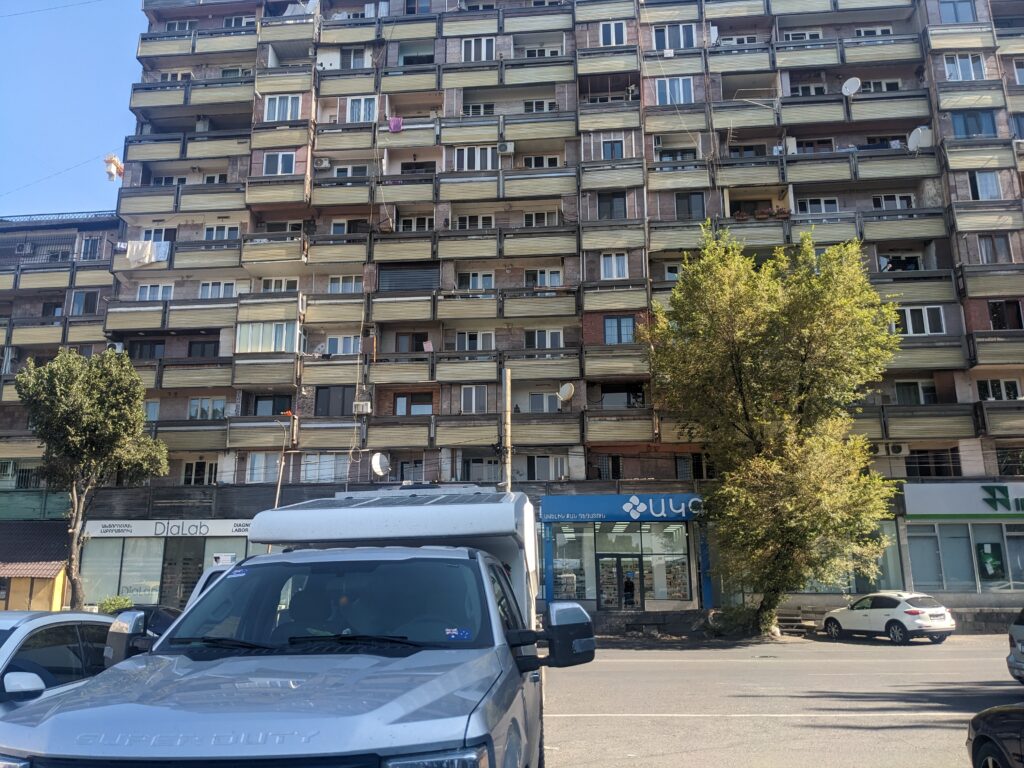
Before we left the capital Yerevan we hit the large indoor fruit and veggie market where we picked up a few tasty treats after the various friendly shopkeepers gave us little samples to try.




We then hit the big Carrefour supermarket in another shopping centre where we could pick up a few extra items, and headed south out of town to the two G’s, the Ghani Temple and the Gerhard Monastery.
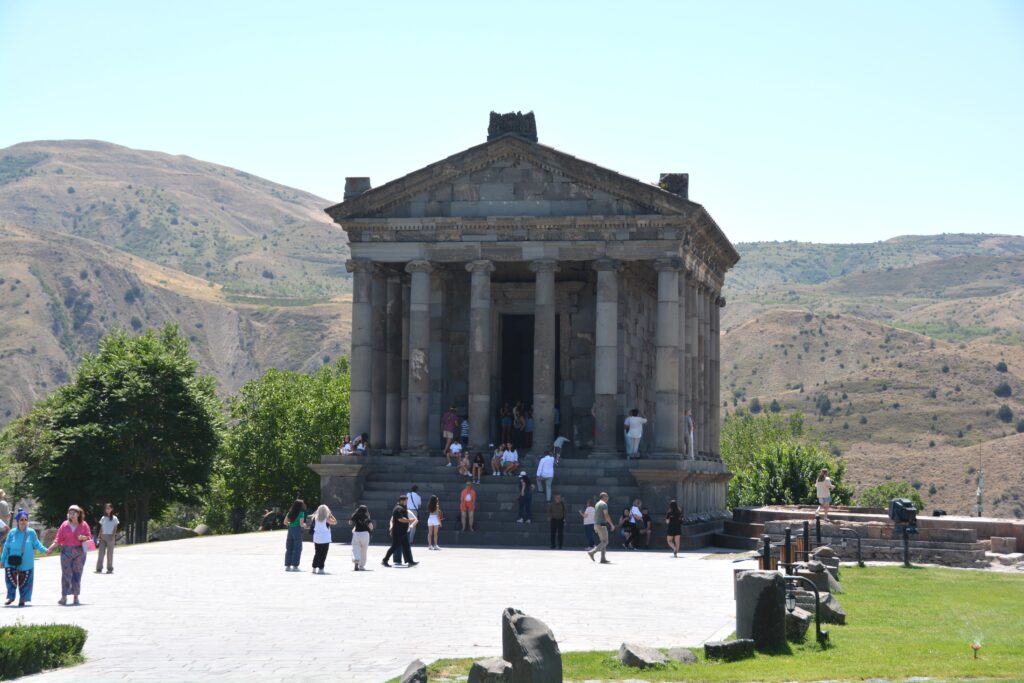
The Garni Temple seems a little out of place and time. Probably built in the first century AD in Greco/Roman style even though the Greeks and Romans never made it this far, it collapsed in an earthquake and was finally rebuilt back in the 1970’s. It’s a crowd favourite but we think you have to appreciate it for it’s historic value.
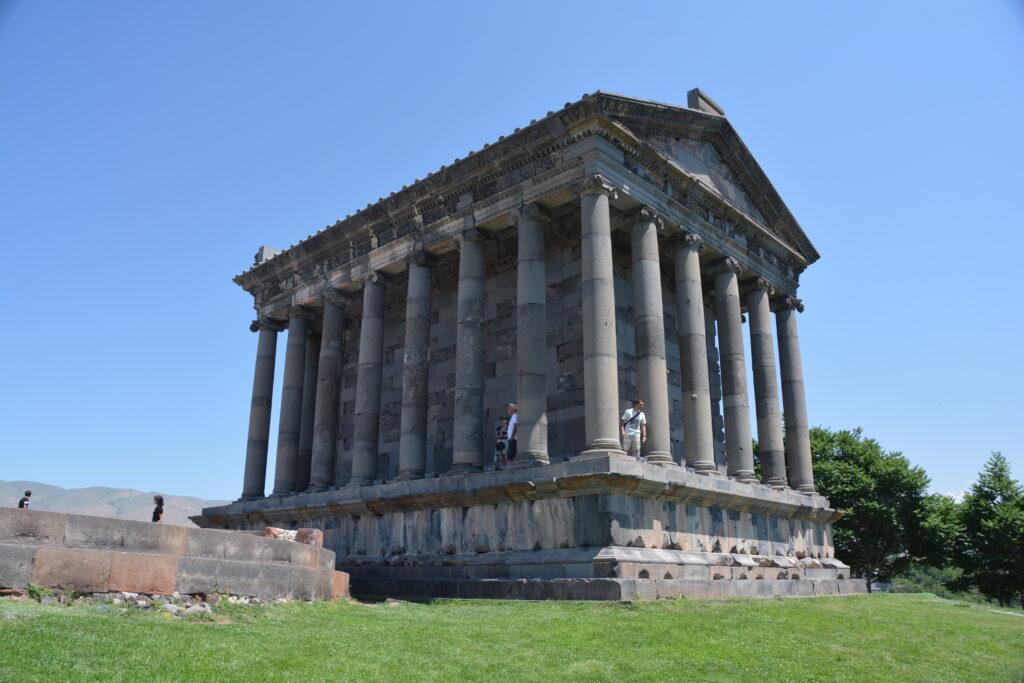
The two G’s are a day trip out of Yerevan for fly in/fly out travellers and Garni has historic pulling power. What we found really interesting is the tourists that were visiting – mostly Armenians of course but a lot of Russians, Iranians (we’re close to their border) and Iraqis. So many languages, dress styles, cultures and interests – it was a real Silk Road experience.
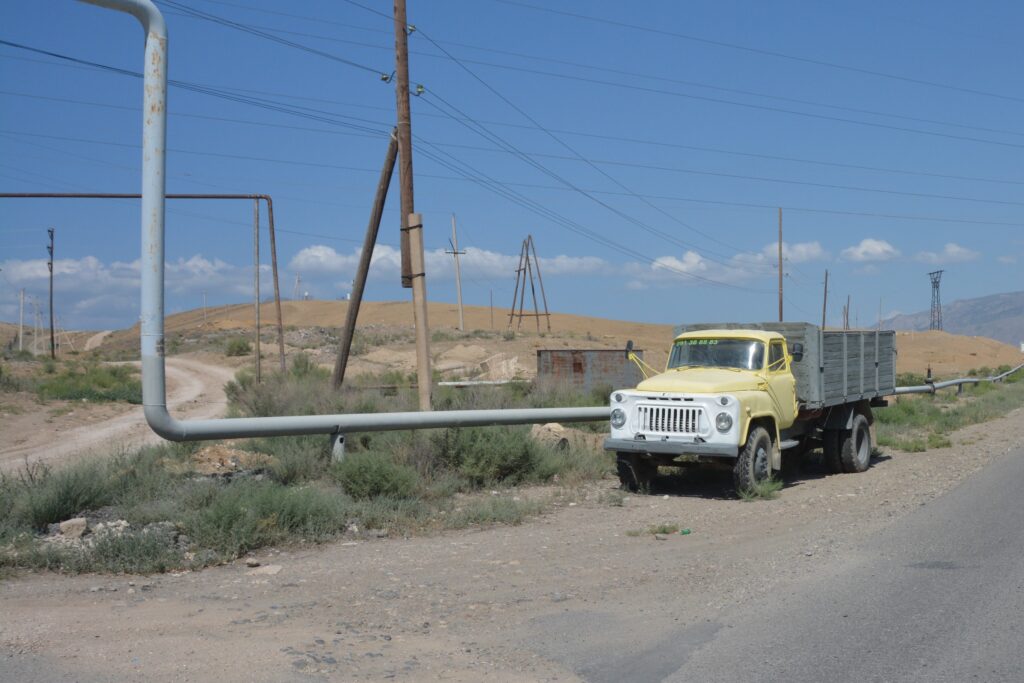
We drove on to the grand 13th century Gerhard Monastery, considered one of the best and most famous monasteries in all of Armenia (and there’s a lot of them!), and loved how half of it was carved into the solid rock wall of the canyon while the other half was built against the wall with adjoining rooms, making quite a cool and unusual complex.
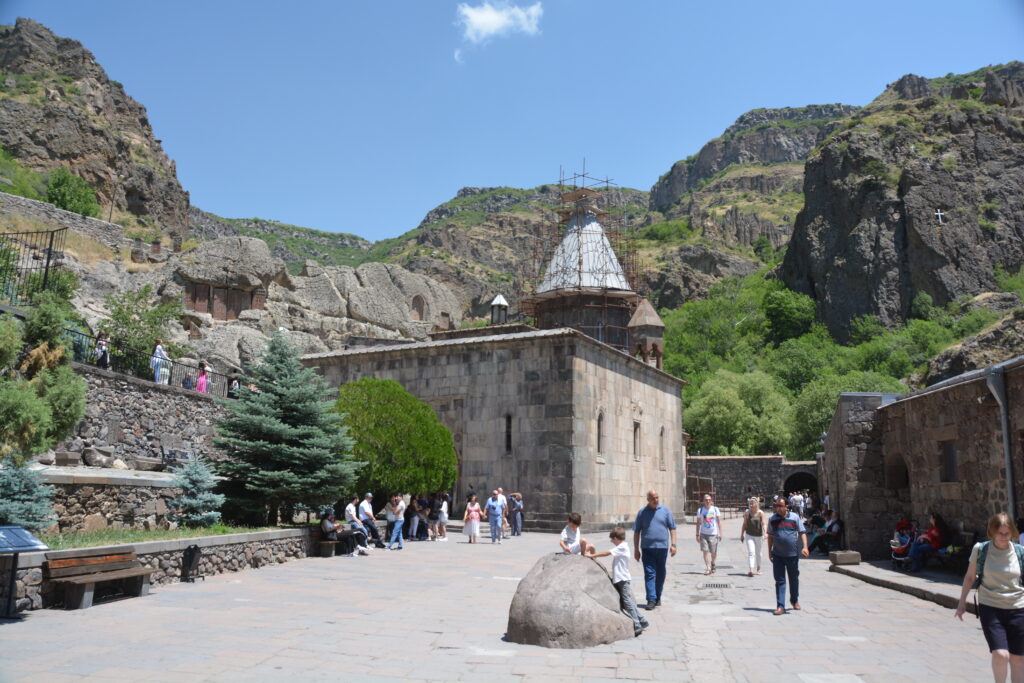
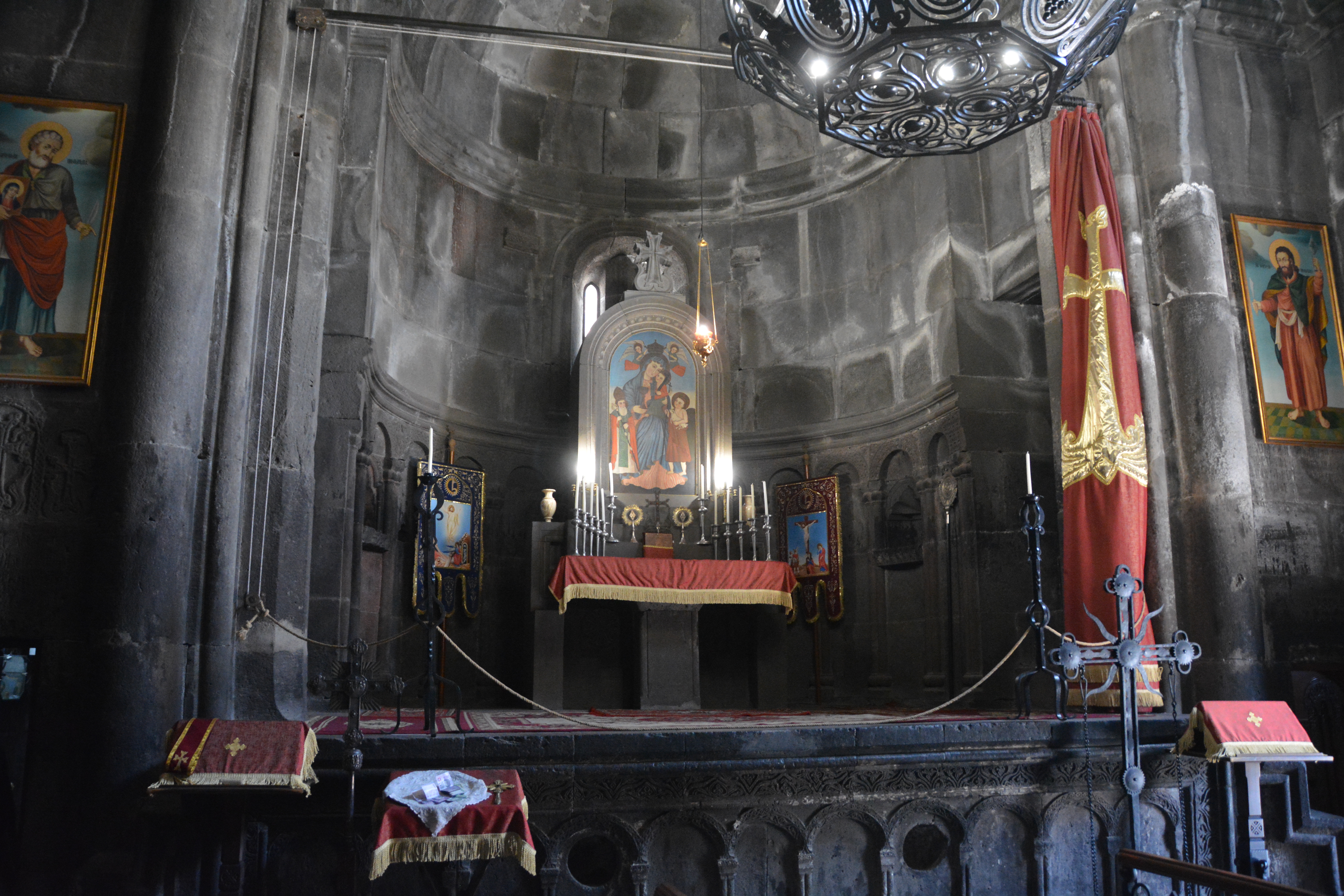
We drove further south, up and over another 2,000 metre pass, and camped in our first campsite for a week, a beautiful place amongst the trees near the easily-pronounceable town of Yeghegnadzor with showers (wow!), washing machines (amazing!) and even a beautiful swimming pool (unbelievable!). Armenia grows on you.
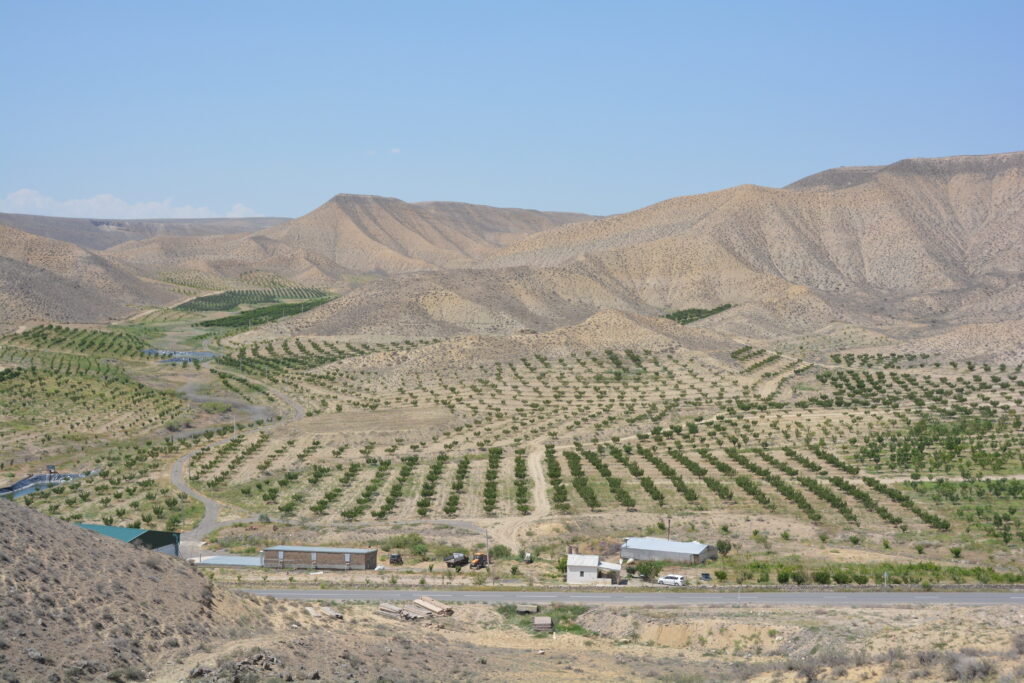
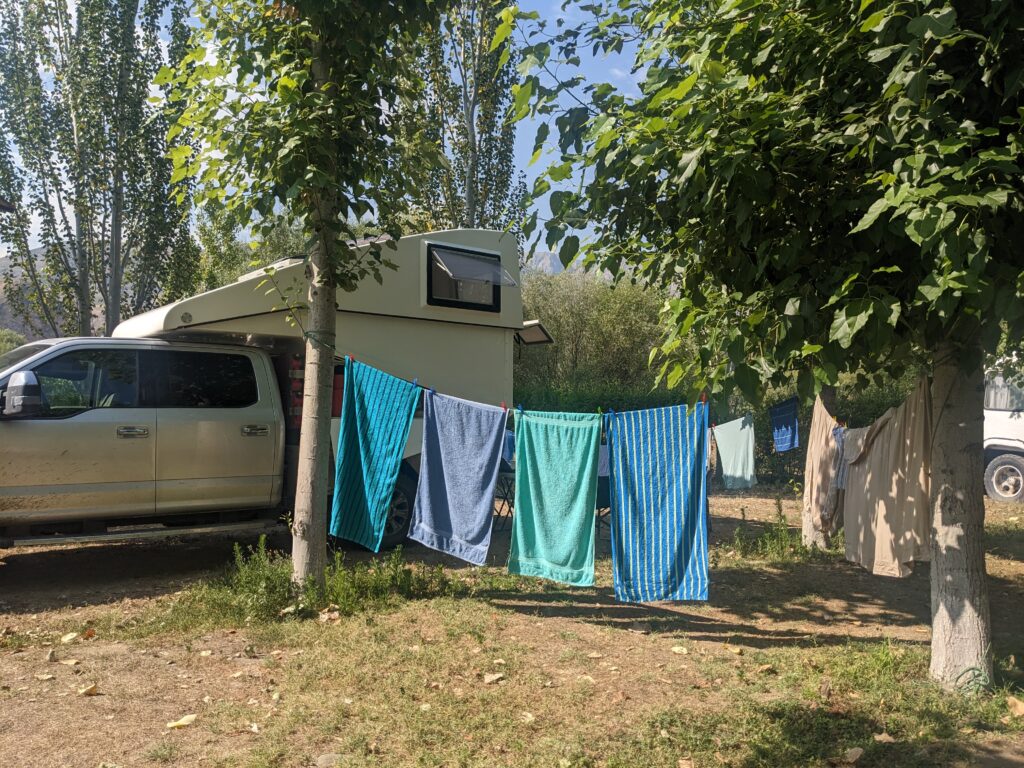
That evening and the next day we ticked off a long list of chores, repair jobs, cleaning, blogging, washing, chilling and swimming before venturing out to explore the area around Yeghegnadzor. And of course because we’re in Armenia that really meant seeing another handful of 13th century monasteries.
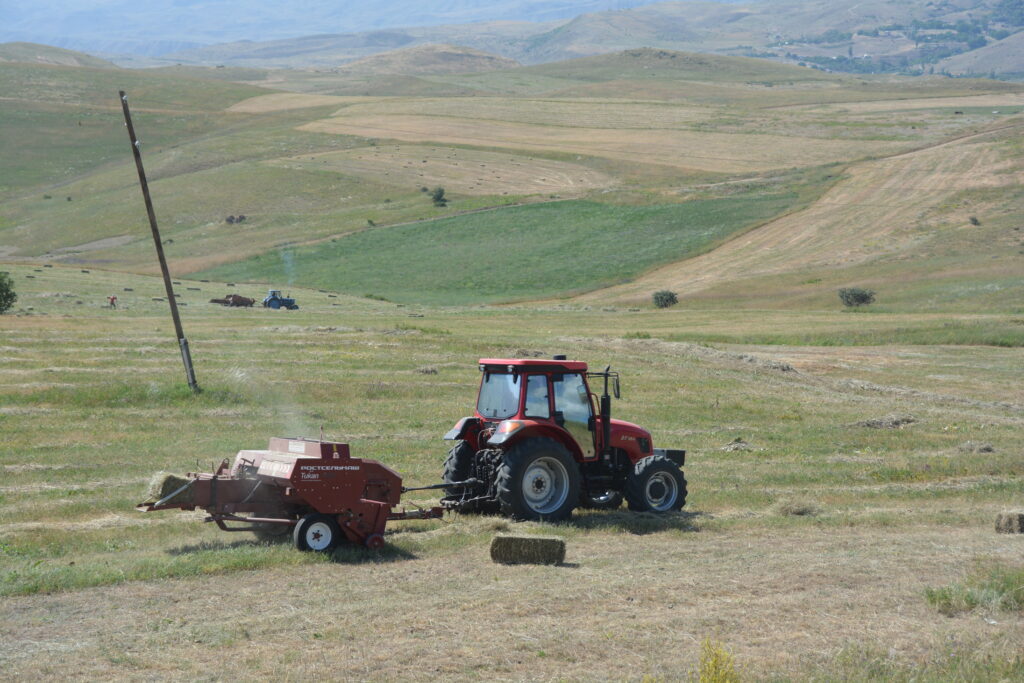
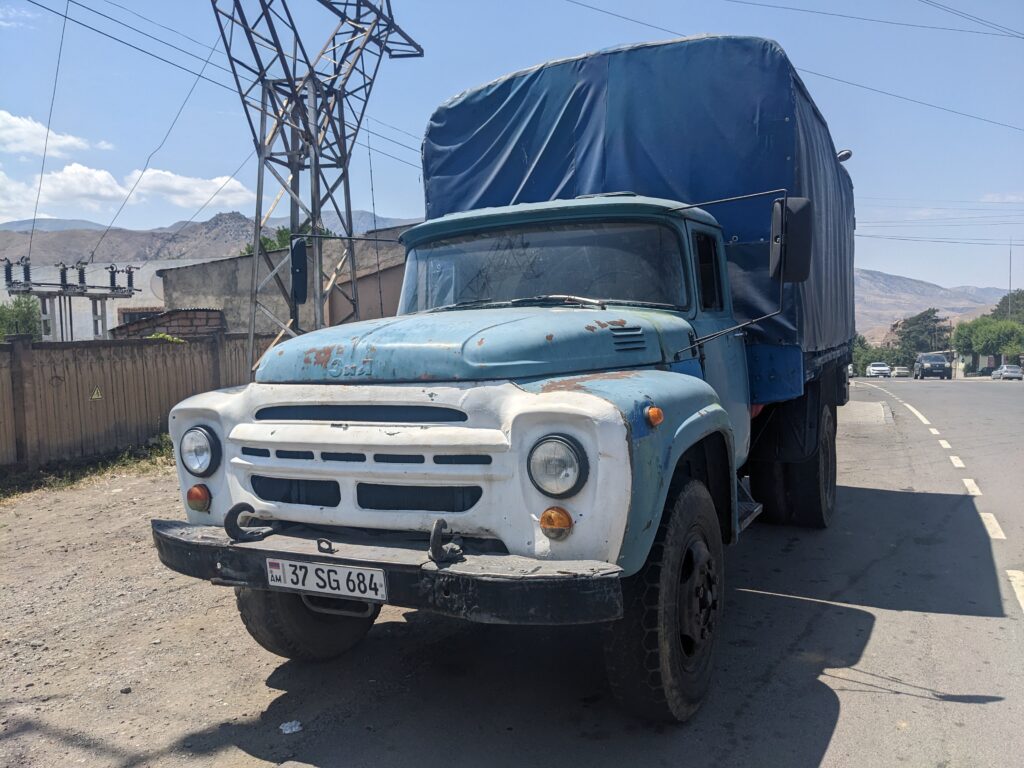
First we drove up a winding dirt road to see the Tanahat Monastery which was also the site of a famous university from the same era. Today this monastery cuts a lonely figure on a forsaken mountain but 800 years ago it was a thriving centre for religion, learning and progressive thinking.
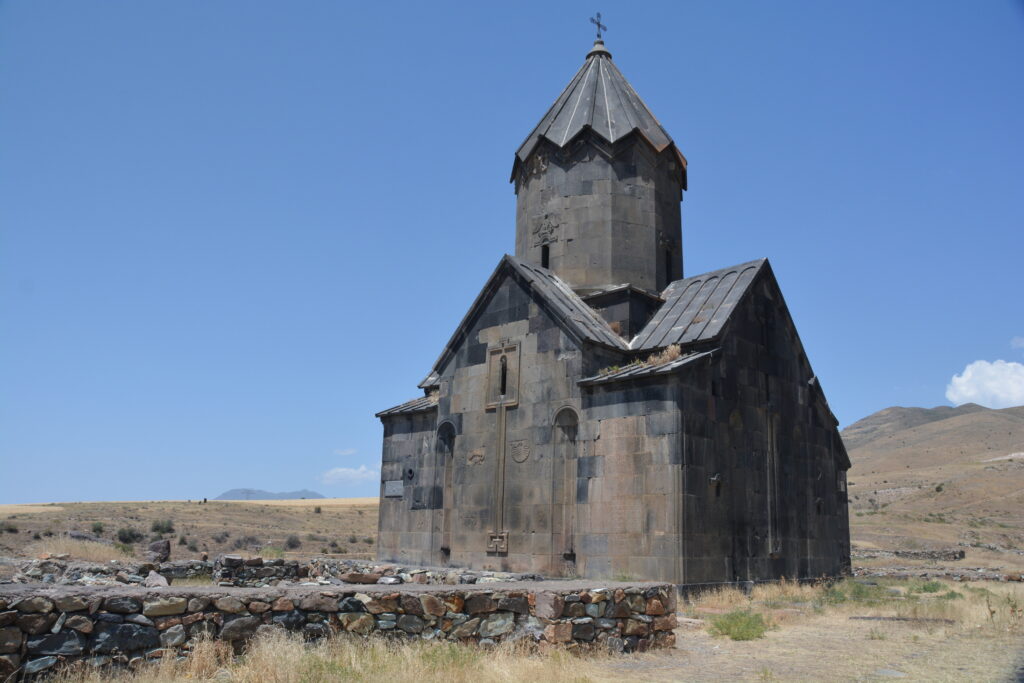
We saw another church on the distant ridge and somehow like an unseeable force we were drawn to it where we met a delightful family of three generations who talked to us through their 13 year old daughter who spoke a bit of English. They were relieved to hear we weren’t Russian and they asked Julie if she was Christian. Even in these remote and distant places you have to pick your friends carefully.
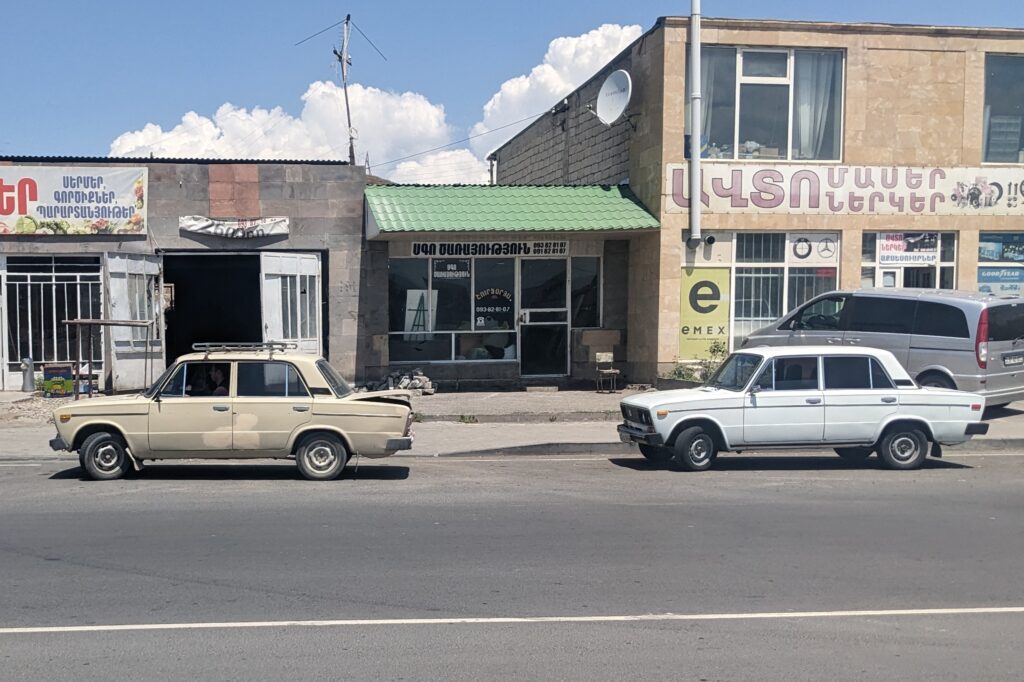
Armenians are world class picnickers. You might not think that’s a big claim but when you’re travelling around this country you are absolutely spoiled for choice when it comes to picnic spots. Most sites include a covered table, usually with a fire pit for a barbeque, sometimes next to a river for a post-lunch swim, or at a public swimming pool or at a scenic lookout or at a cemetery or just on the side of the road next to a tap sprouting spring-fed water. Armenians know how to picnic.
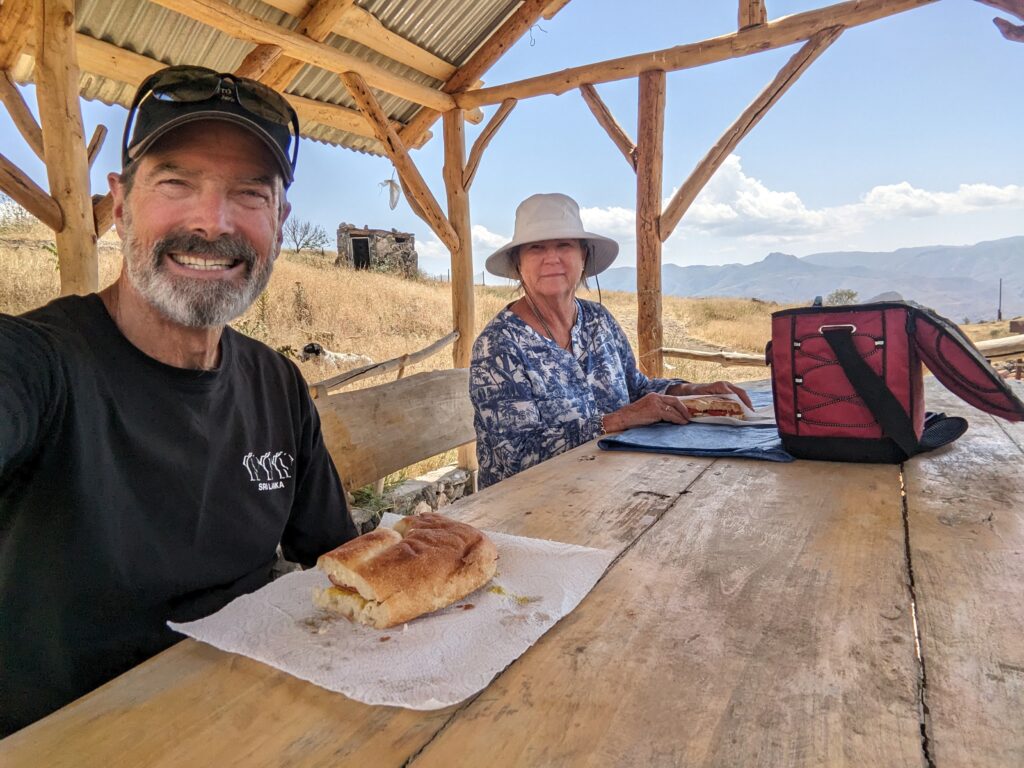
The highlight of the day was the 14th century Novavank Monastery, at the end of the road through a narrow gorge, sitting high and proud surrounded by beautiful red-tinged mountains.
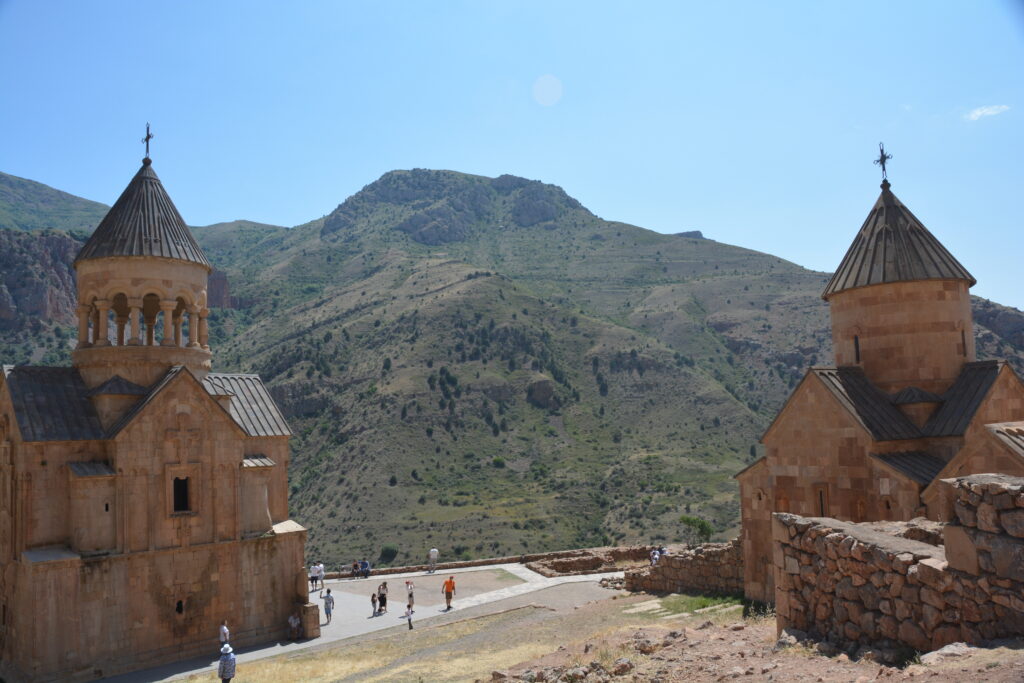
On our return we stopped at the Bird Cave, a huge cave system where archaeologists have found signs of human habitation going back thousands of years. Two of their finds were the oldest known wine-making facilities and the old leather shoe which has been dated to be 3,500 years old. Now that’s old!
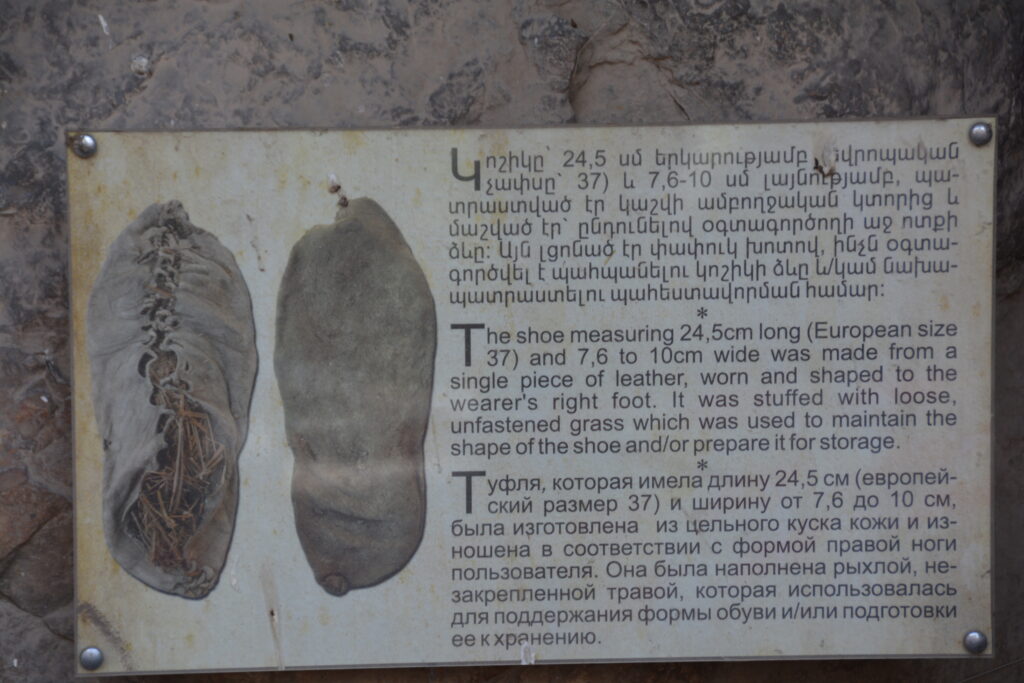
This campsite was very compelling on a 36C (97F) with it’s cold swimming pool and ample shade but the next morning we moved northward again towards one of the country’s geographic highlights – Lake Sevan.
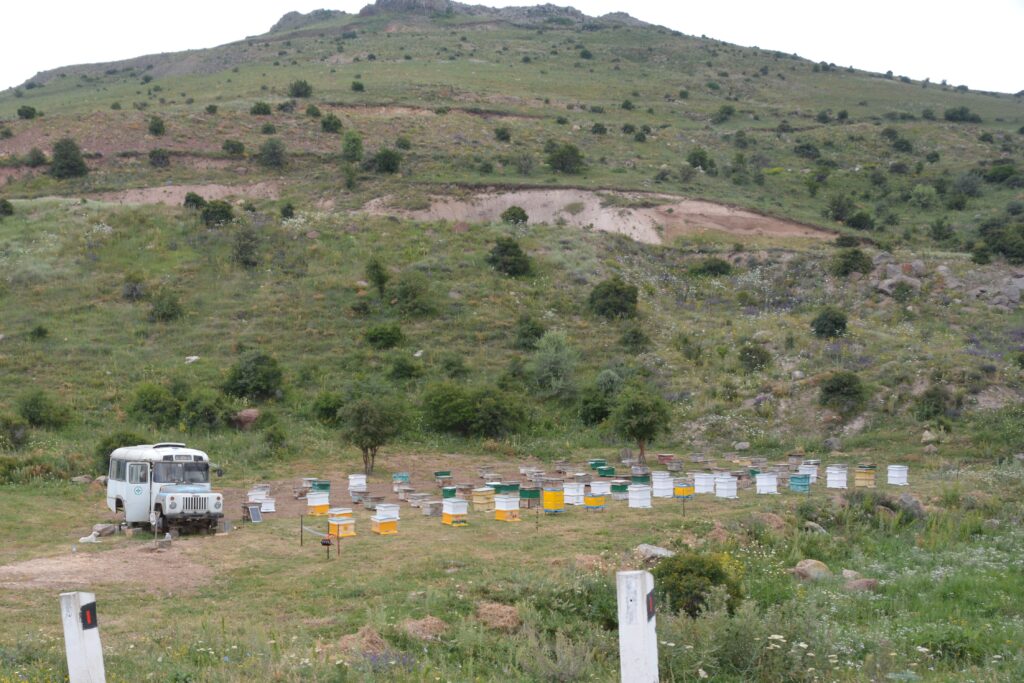
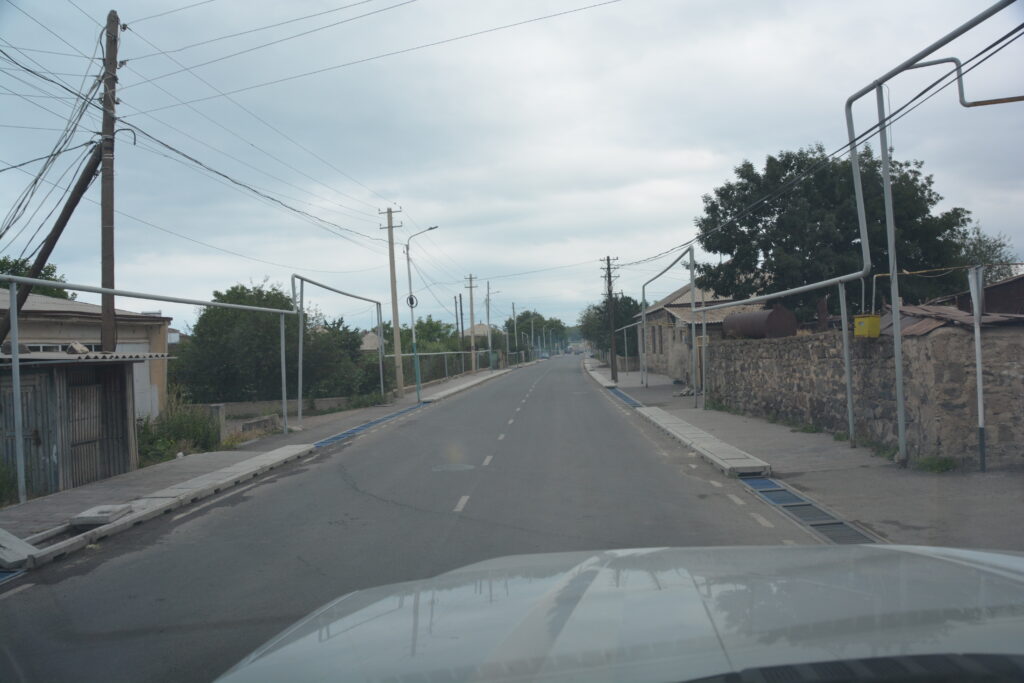
Along the way we detoured into the Yeghegis Valley with it’s steep rocky mountains and modest villages. In particular we had a look at a 13th century Jewish cemetery which is unique because before it was discovered in the 1990’s there was no written or archaeological evidenc that Jewish people ever lived in Armenia.
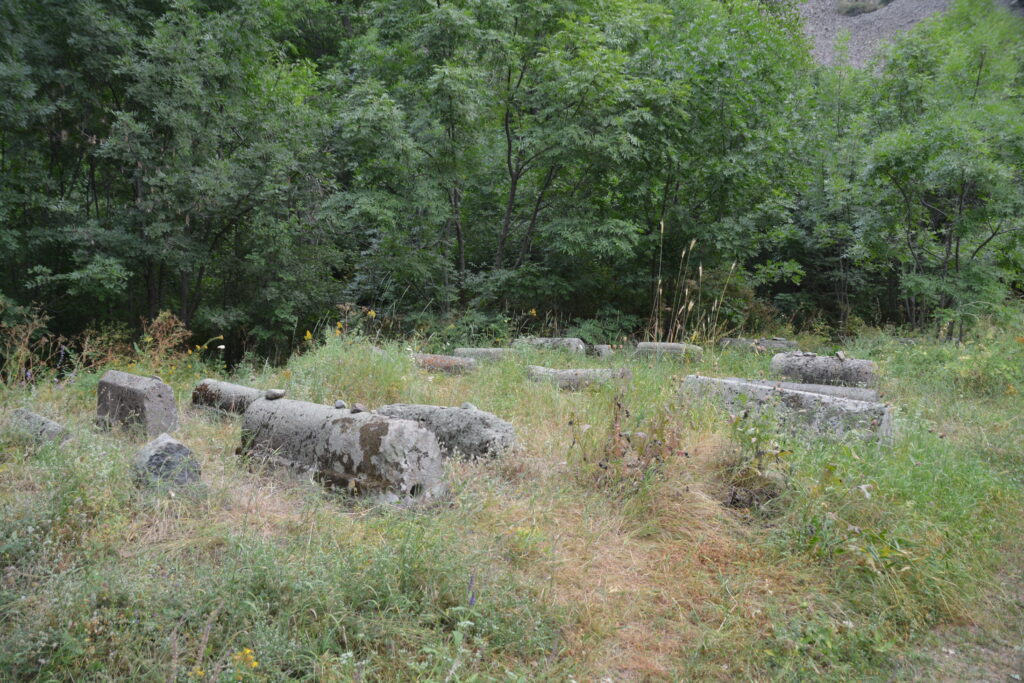
Between us and Lake Sevan was a high mountain pass which we tackled one switchback after another, stopping to admire the ancient Caravanserai near the summit, providing shelter to thousands of travellers over the pass many centuries ago. Finally we crested the summit at 2,410 metres (7,900 feet), the highest point on this trip so far. And then it was back down the steep treeless mountain to the largest fresh water lake in the Caucasus, Lake Sevan. At 1944 metres (6,300 feet) Lake Sevan is Armenia’s answer to Lake Tahoe in California.
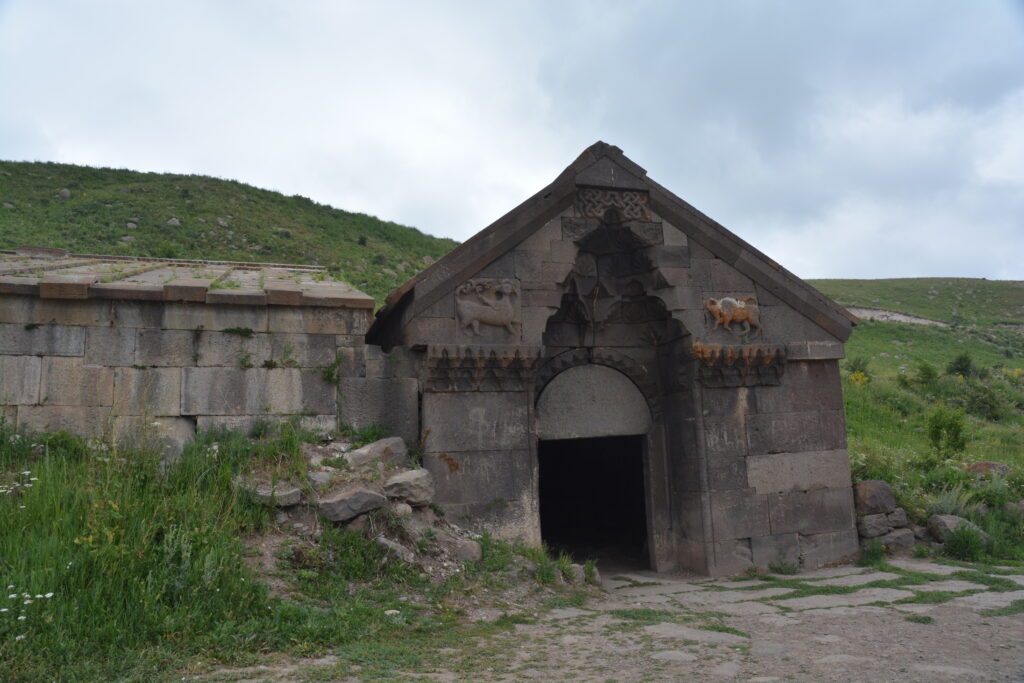
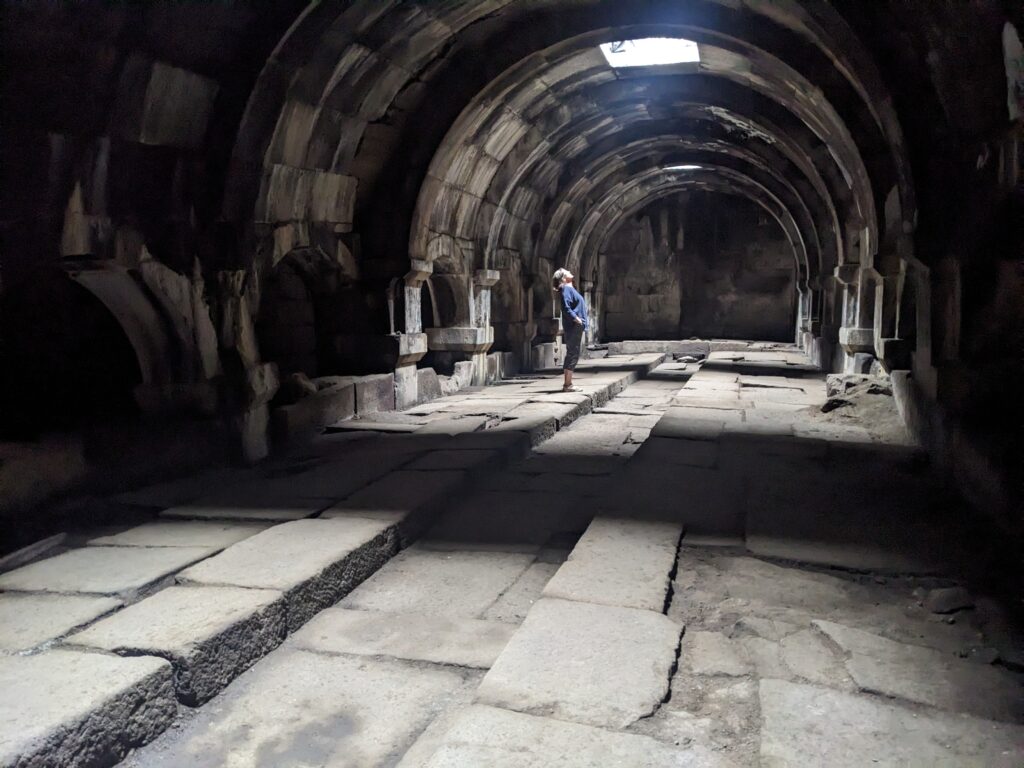
Along the drive north following the shores of the lake we stopped at the cemetery in the town of Noratus to admire the incredible field of khachkars, which are outdoor steles carved from stone that date back to the 13th and 14th centuries. We’ve seen khachkars all over Armenia, they are memorial or burial stones, sometimes used for worship, which show off the amazing stone carving talents of the artists 700 or 800 years ago and are unique to this country.
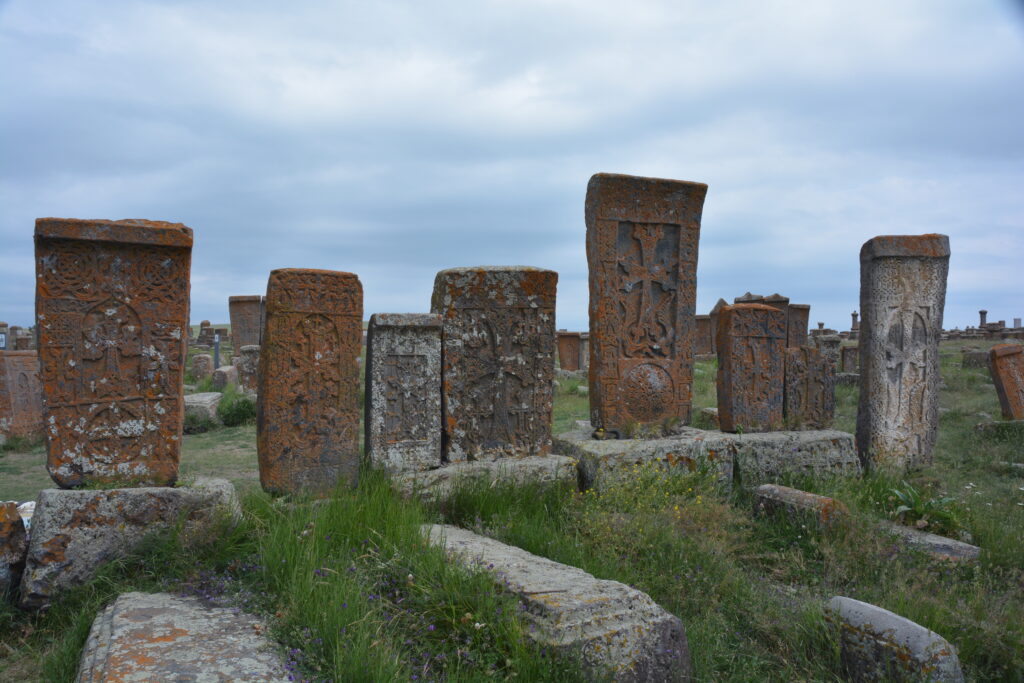
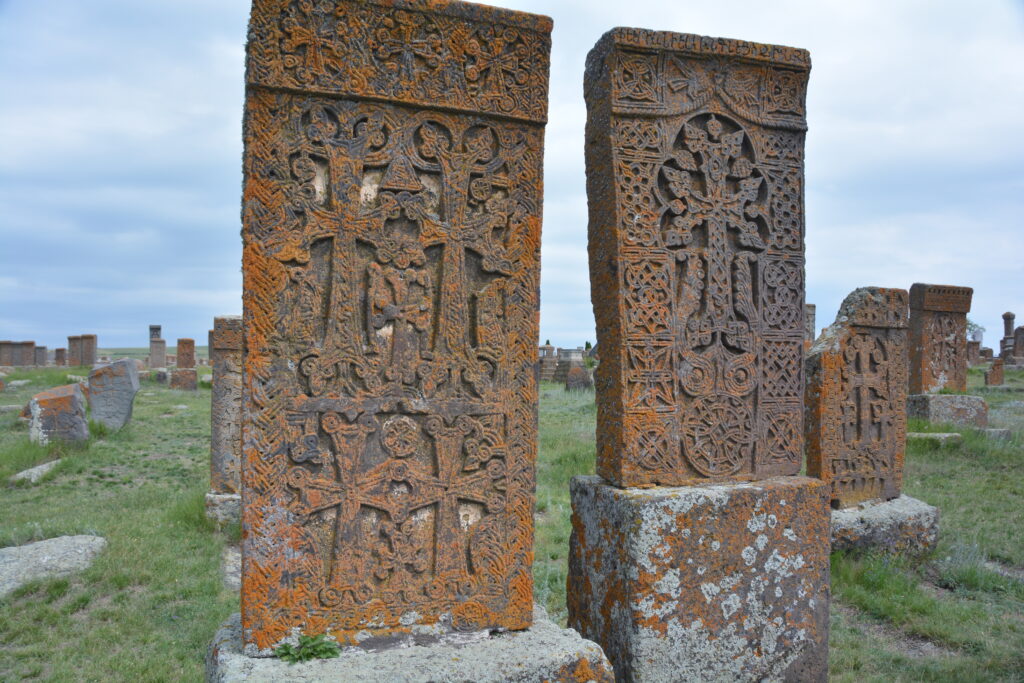
We also had to stop at 14th century Hayravank Monastery, set high on a ridge overlooking the lake, because no day in Armenia is complete without at least ancient monastery. We also stopped at one of the popular public beaches on the lake, swarming with locals barbecuing, eating, swimming and picknicking like no one else. And one big group – an office party from a dental clinic no less, invited us in for barbequed lamb on a skewer – absolutely delicious.
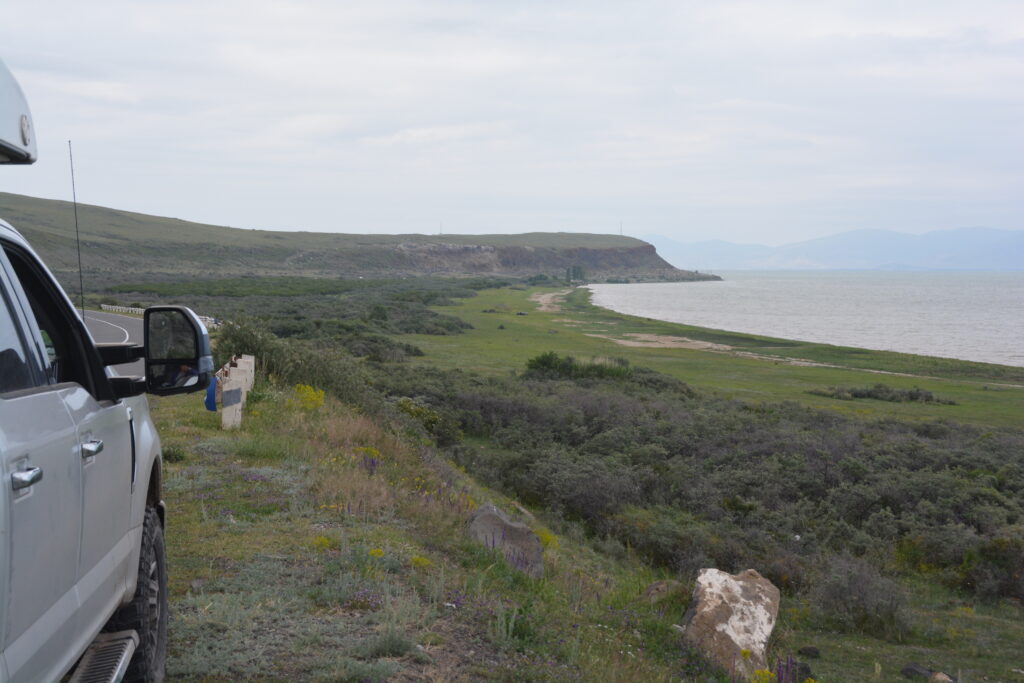
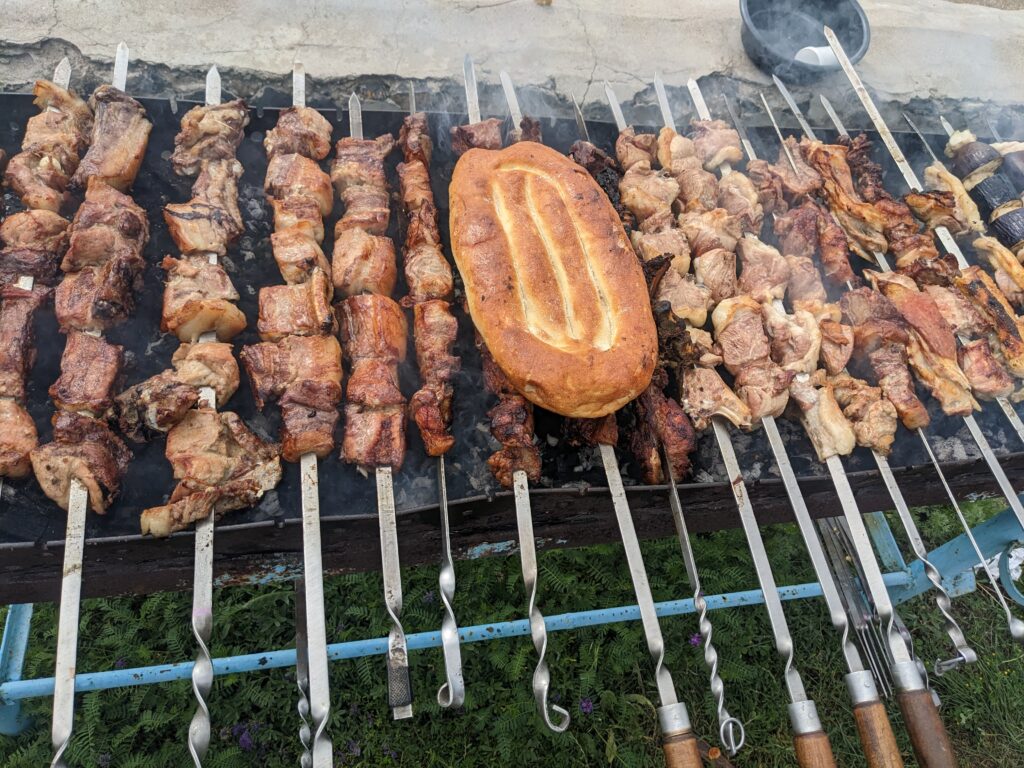
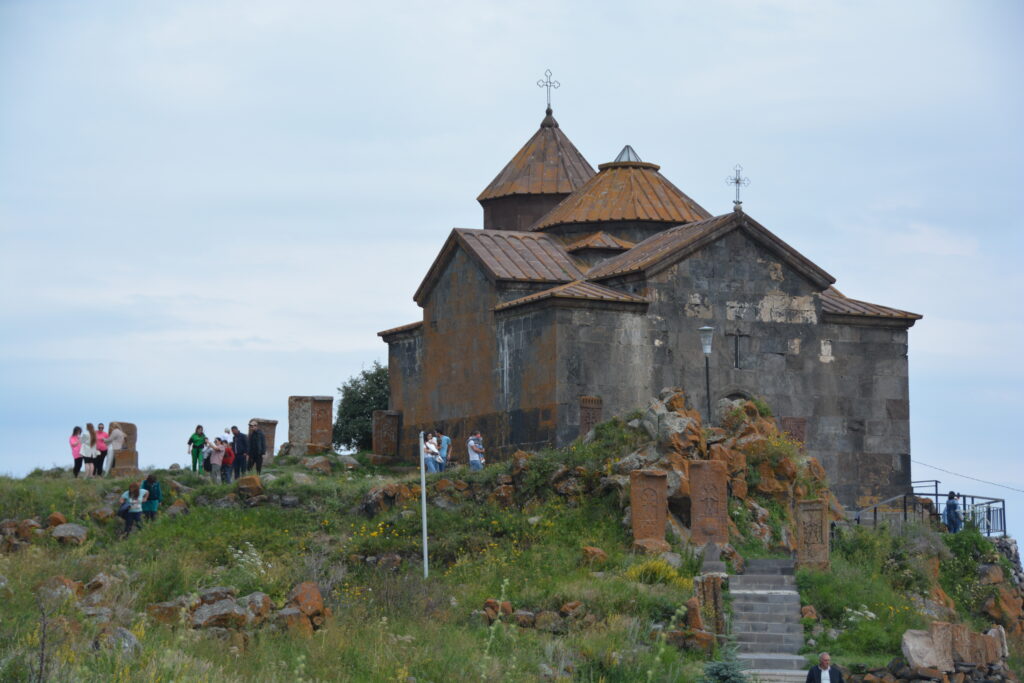
We camped that night in a modest campsite amongst the pine trees, the only campers there and were given beautiful homemade baclava by the owner’s wife. The next day we saw how Lake Sevan had more to offer, both bad and great. The shore is lined with old Soviet-era buildings and hotels, all of which are empty shells of their former glory, and the town of Sevan itself has seen better days. But the Sevan Peninsula that sticks into the lake nearby features a couple of handsome, if not a little repetitive, monasteries which command panoramic views across the lake.
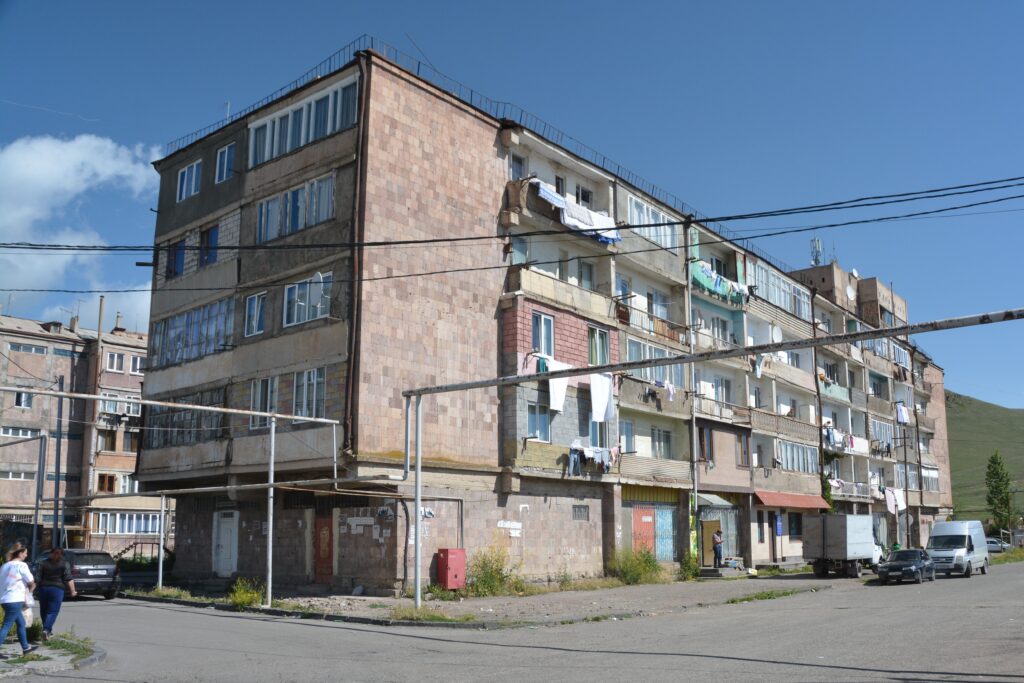
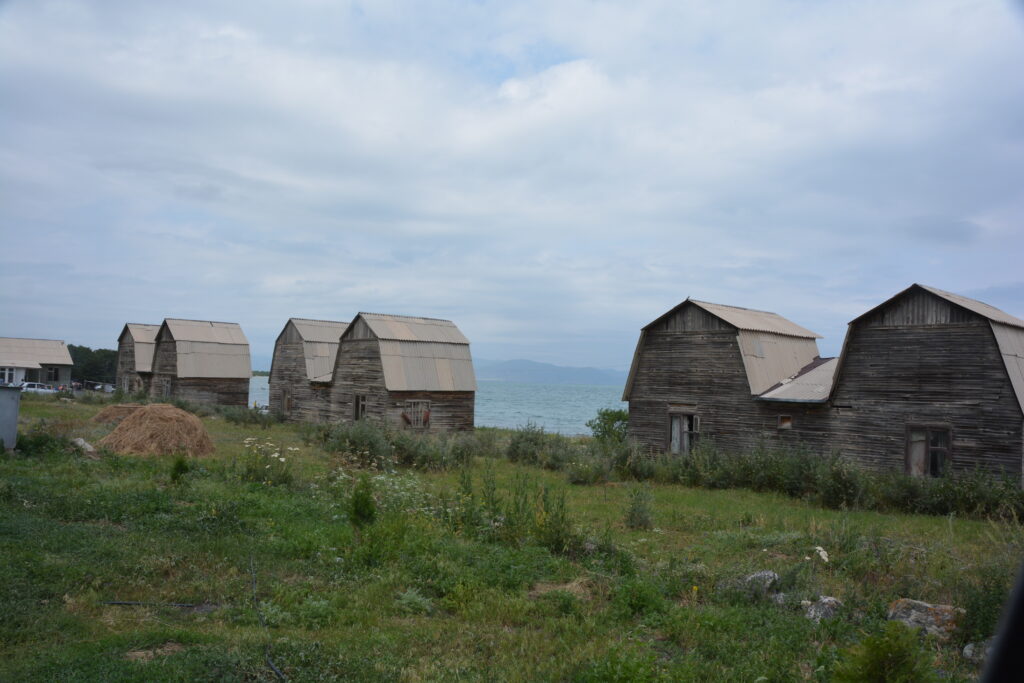
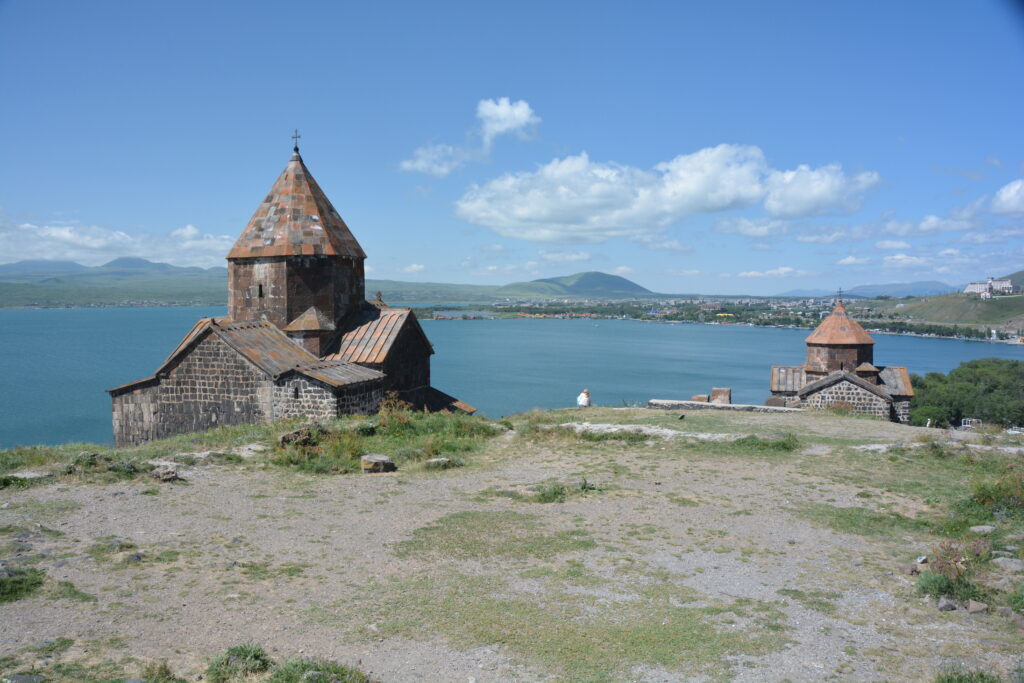
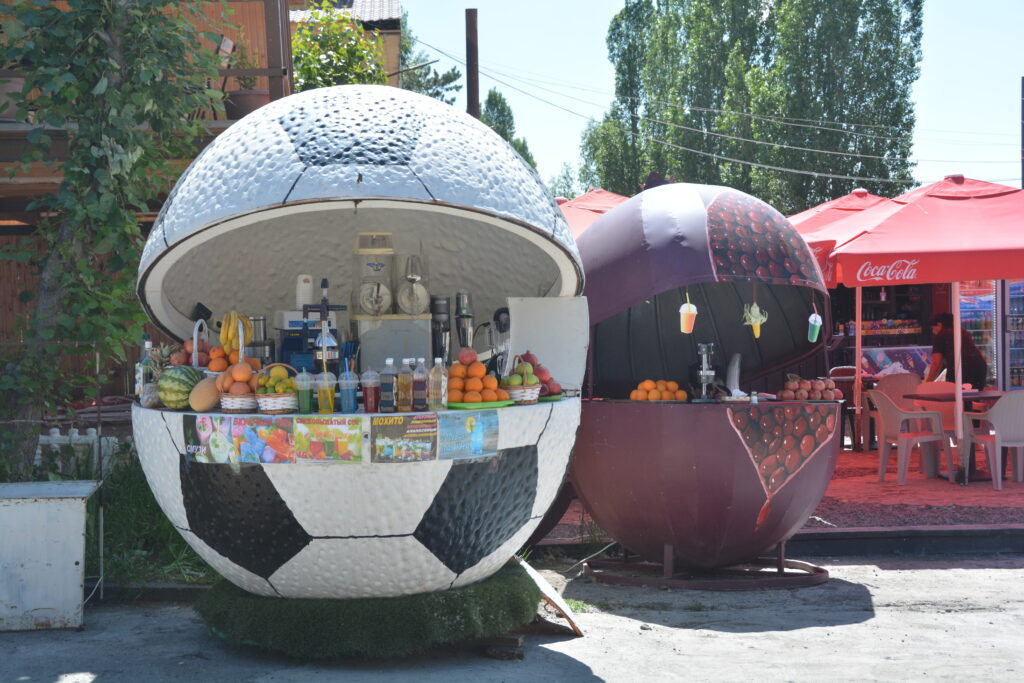
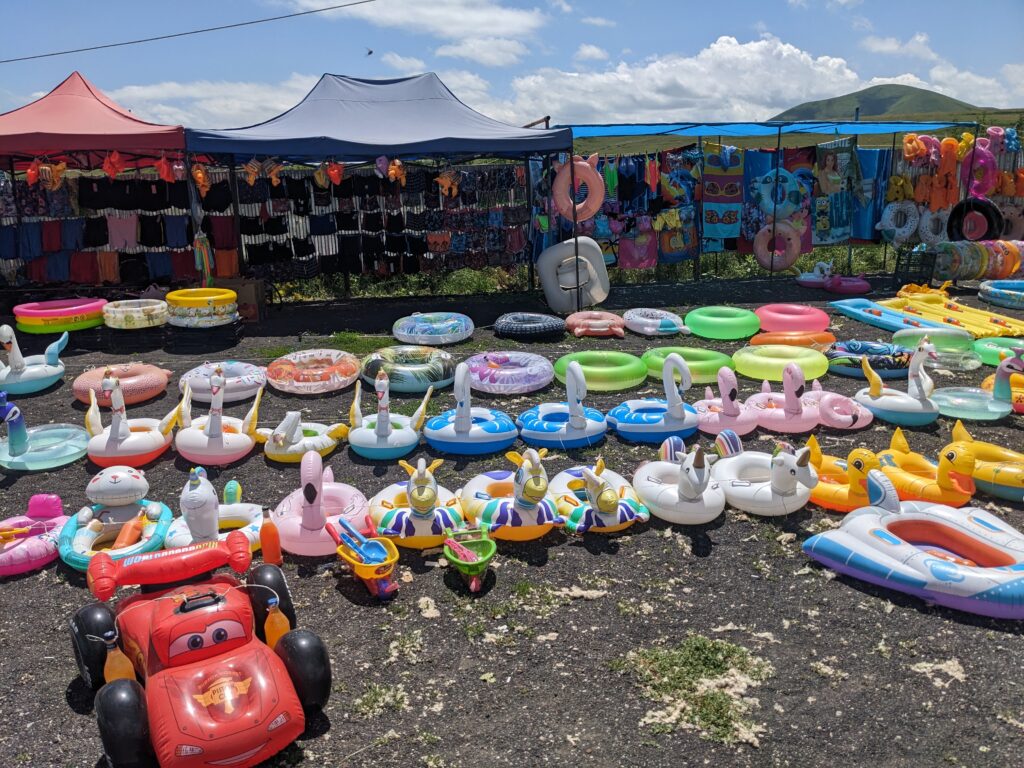
We also hit the nearby ski resort town with the easily pronounceable name of Tsaghkadzor where the Russian Olympic ski team used to train before heading north to the acclaimed Debed Canyon. To get there we passed through wonderful green velvet mountains, deep river canyons and timeless villages that kept us entertained all afternoon. There must have been a higher Russian influence here because signs were often in Armenian and Russian. The town of Vanadzor in particular felt very Russian, including the appalling apartment buildings, run down infrastructure and dilapidated public buses.
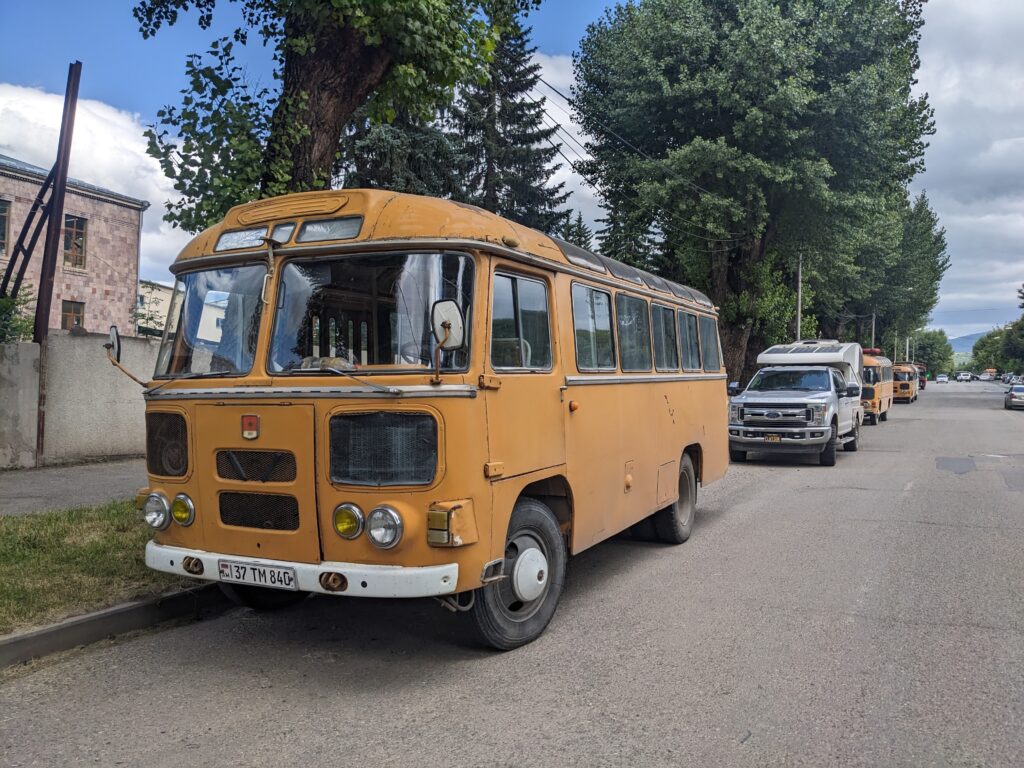
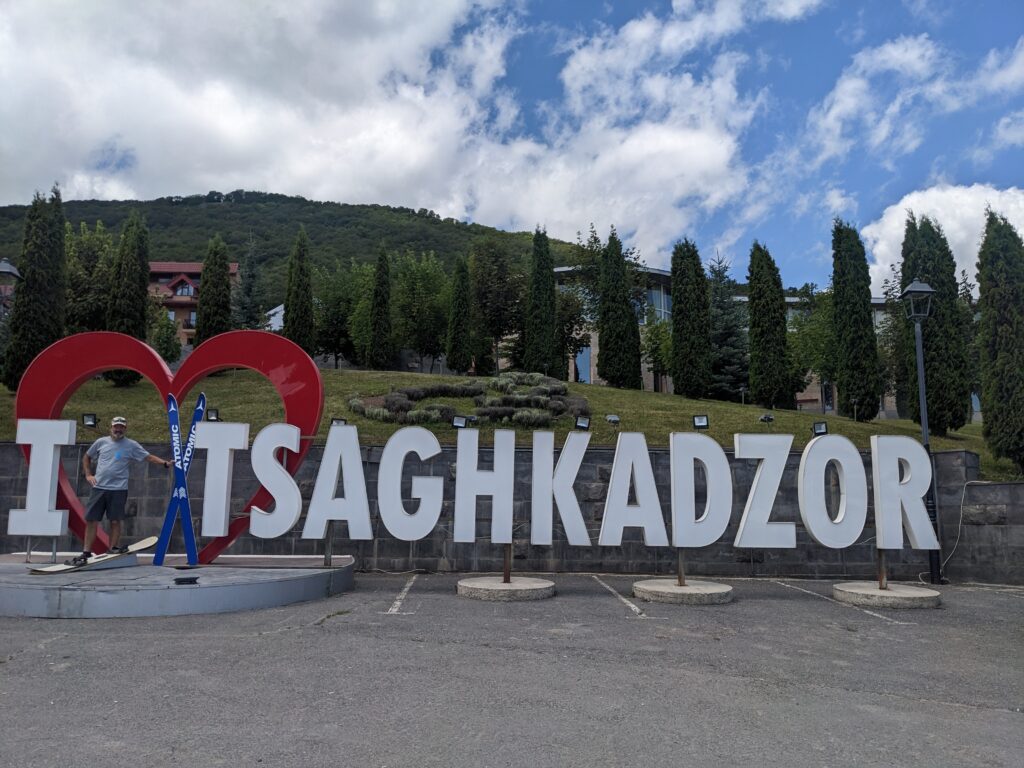
Our target was the UNESCO World Heritage Sanihan Monastery, perched high on the ridge above the canyon in a village of the same name. But getting there was a chore. The switchback road was under heavy construction so there were long waits and Karen got us hopelessly lost in this forlorn mountain village. But the monastery was great! Better, different, bigger, much more interesting than the last 30 or 40 monasteries we’ve seen (note modest exaggeration) and worth the trouble.
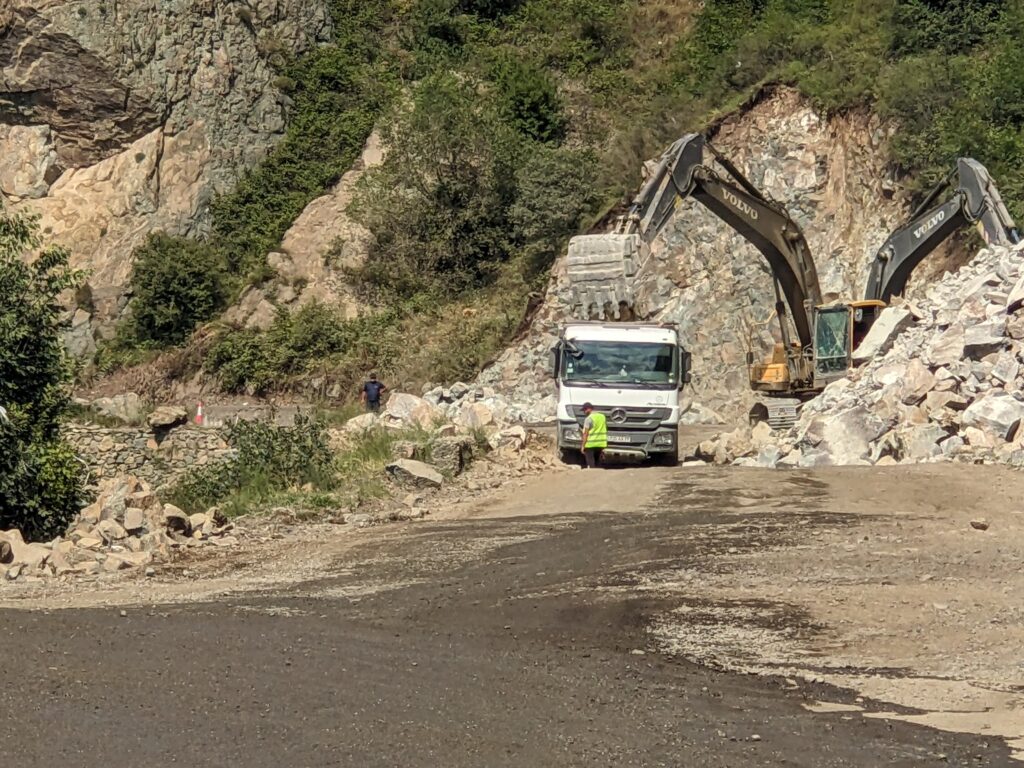
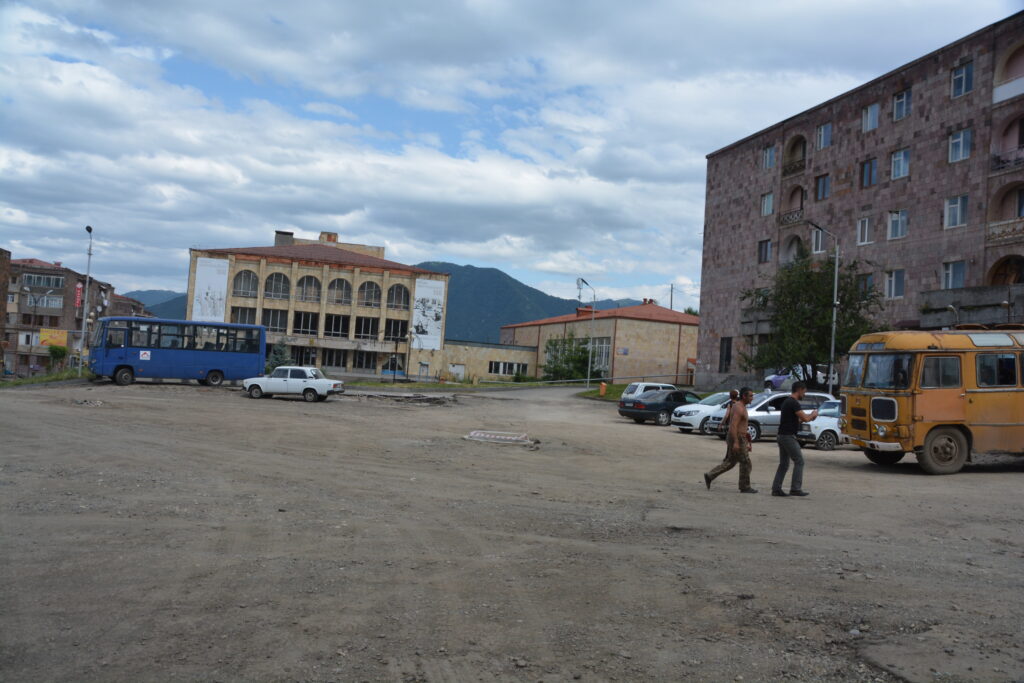
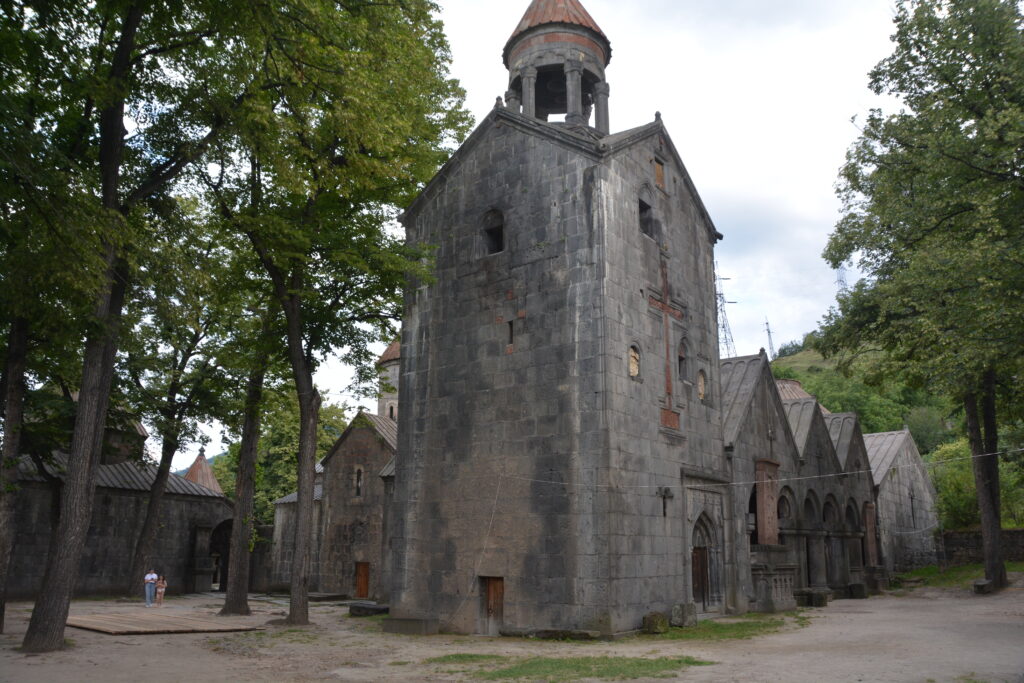
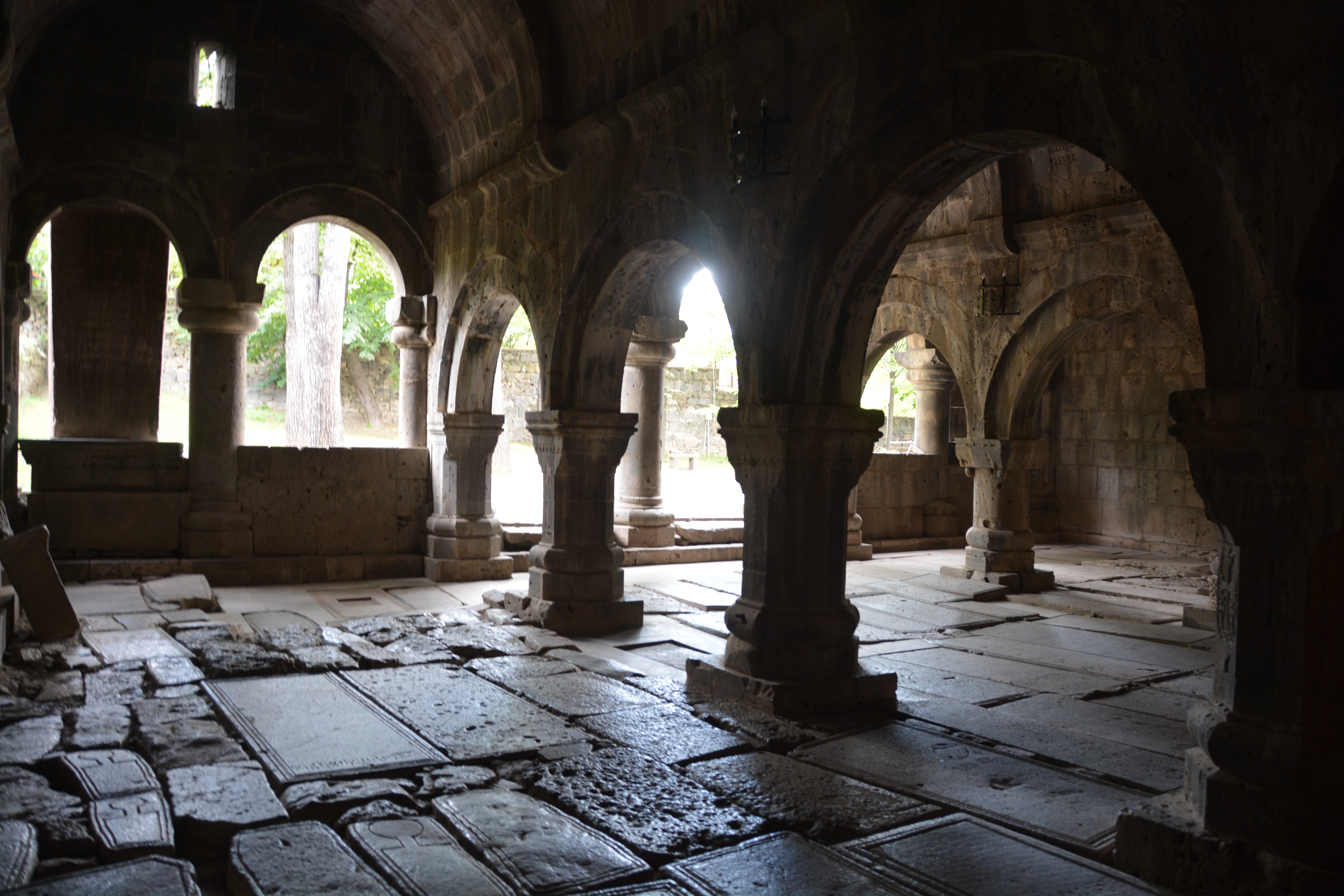
We found a spot to camp in a grassy field near the canyon’s edge overlooking two other villages and pinched ourselves for being in this remote and beautiful location. Travel really is a beautiful thing.
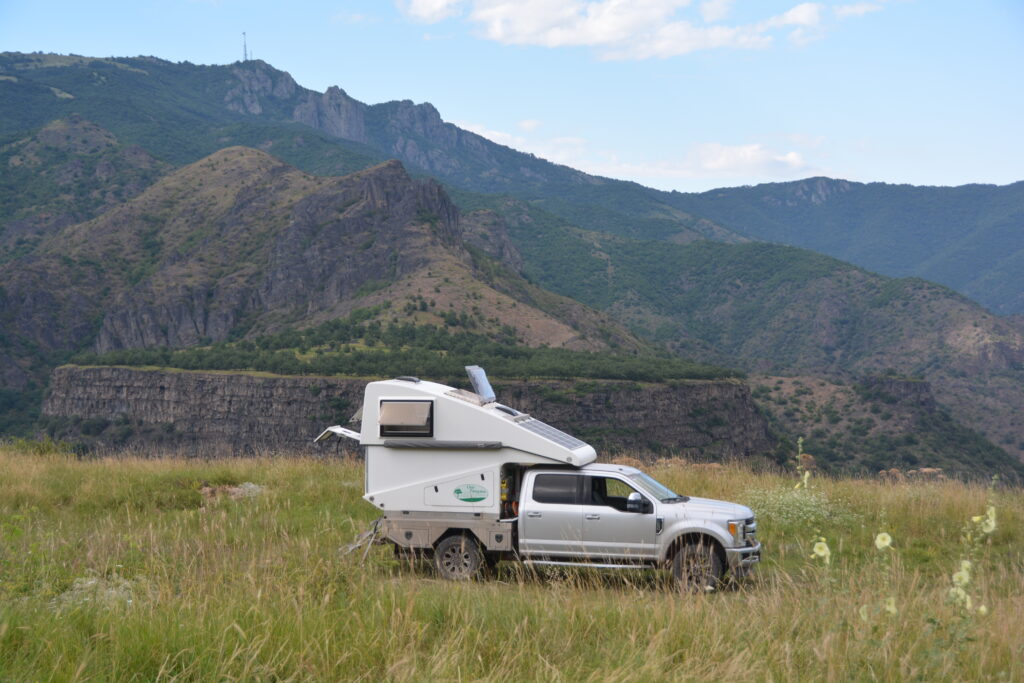
But Armenian roads are not a beautiful thing. We eventually made it off the ridge, down the valley and then back up the ridge to another village and another World Heritage site, Haghpat Monastery. We were about to leave Armenia and to be honest, by now most monasteries looked the same but in Haghpat we had saved the best for last. A complex of multiple buildings, all built from the 10th to 14th century, still in outstanding condition with wonderful design and features, this place was a true gem. We were glad we had made the effort to get there.
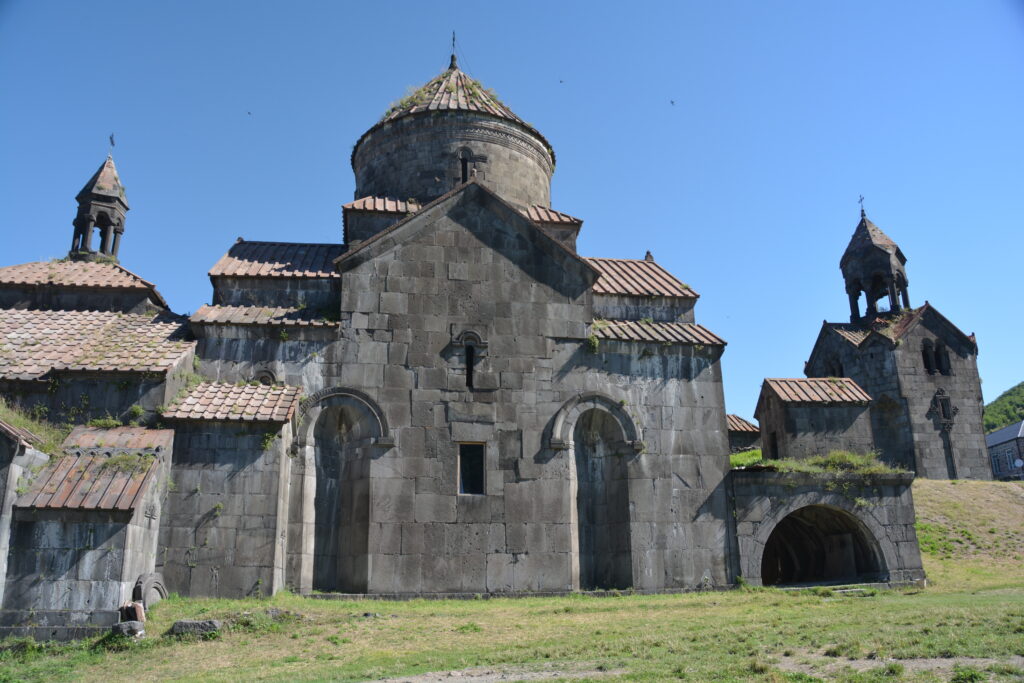
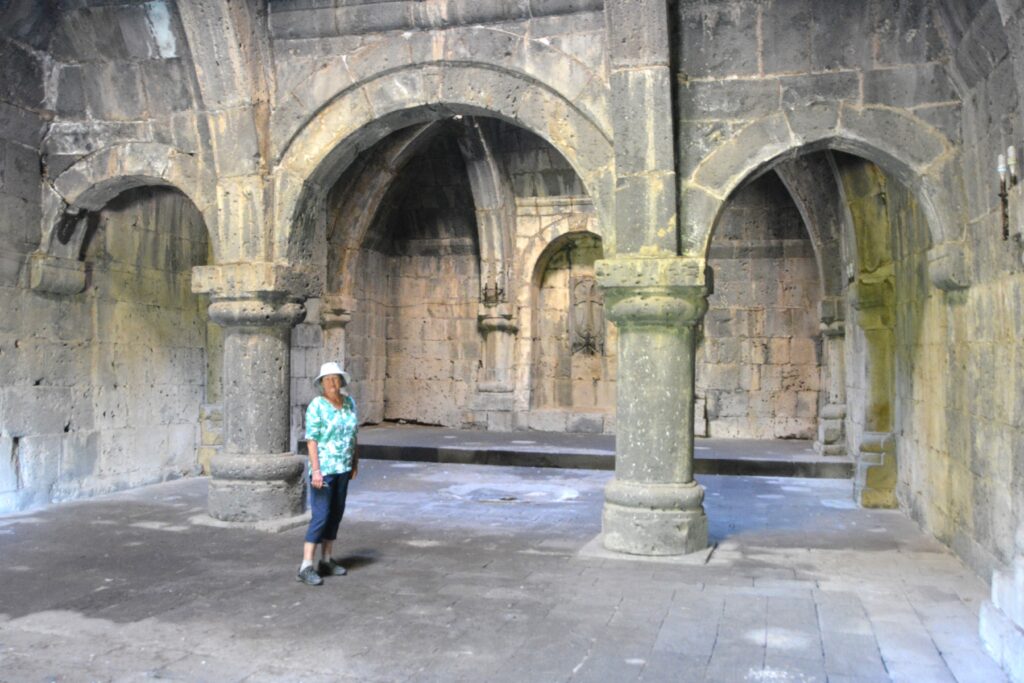
Unfortunately Karen, our GPS, gave us a different way down the ridge which we gullibly followed and it took us on a steep overgrown dirt track with extremely tight hairpins. On a couple of occasions I had to get and walk the track to make sure Tramp was okay with it. Karen, sometimes you are diabolical.
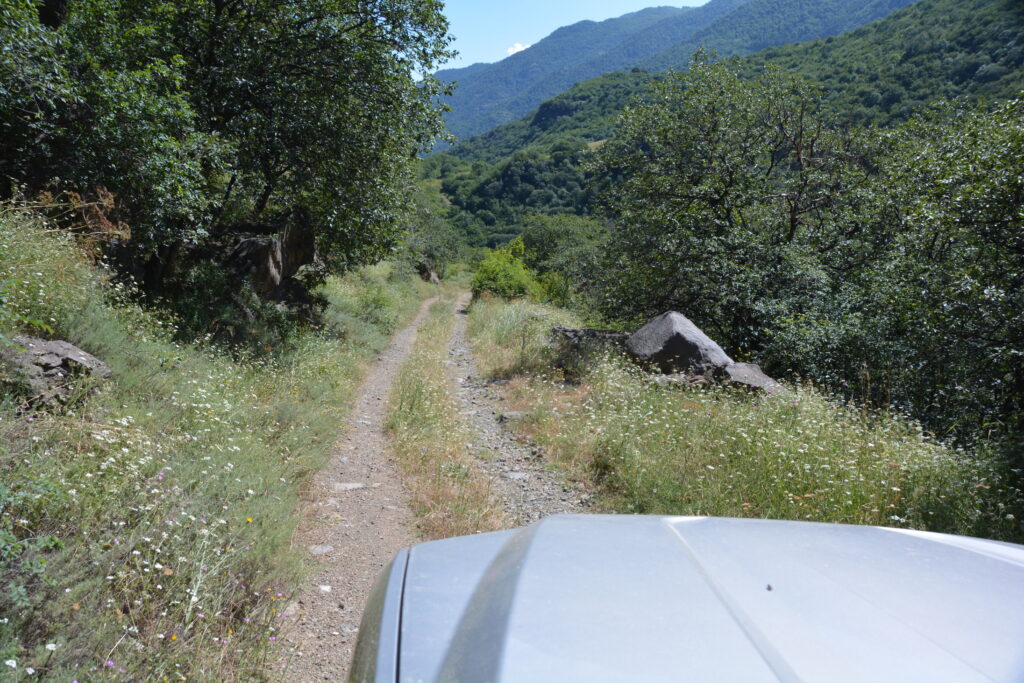
It took only 30 minutes to pass out of Armenia and into Georgia, a relief since the last few borders have been gruesome. And our final view of Armenia? Well, it did grow on us after a while but it was hard fought because despite it’s stunning mountains and wonderful historical legacy the towns are tired and perhaps understandably the people are not warm and friendly by nature. We are hoping for better things for the country and it’s people in the future, they certainly deserve it.
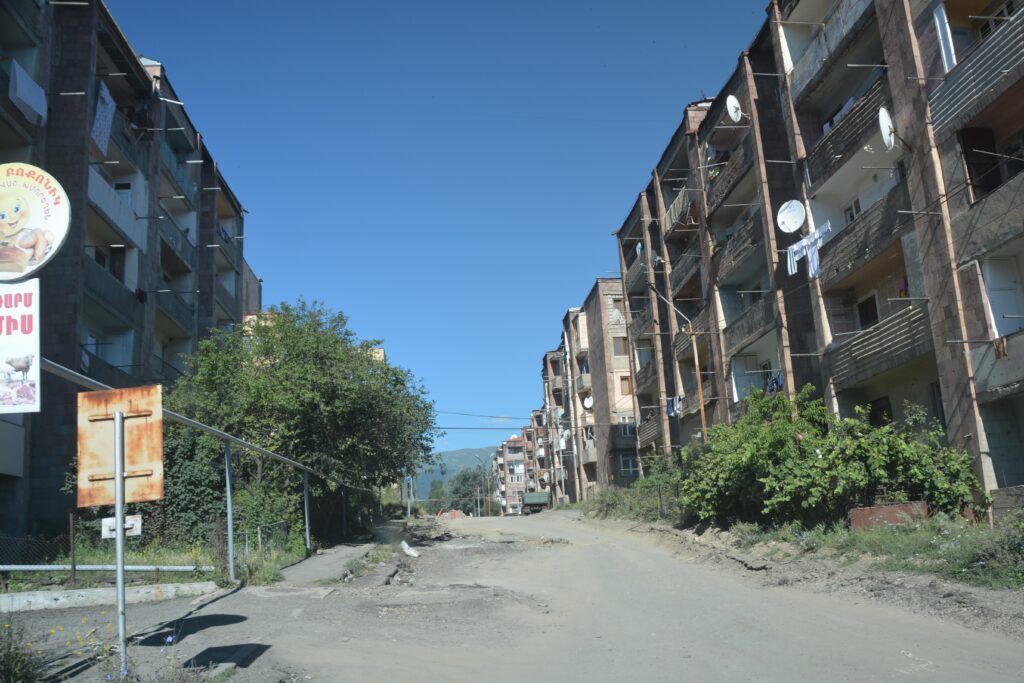
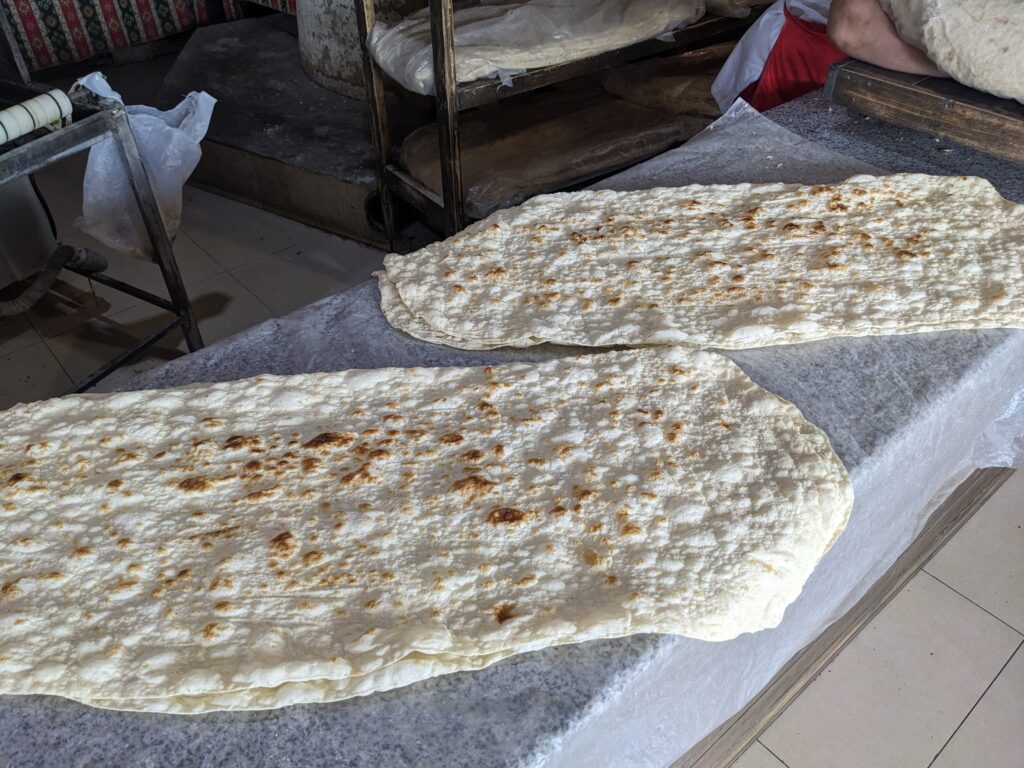
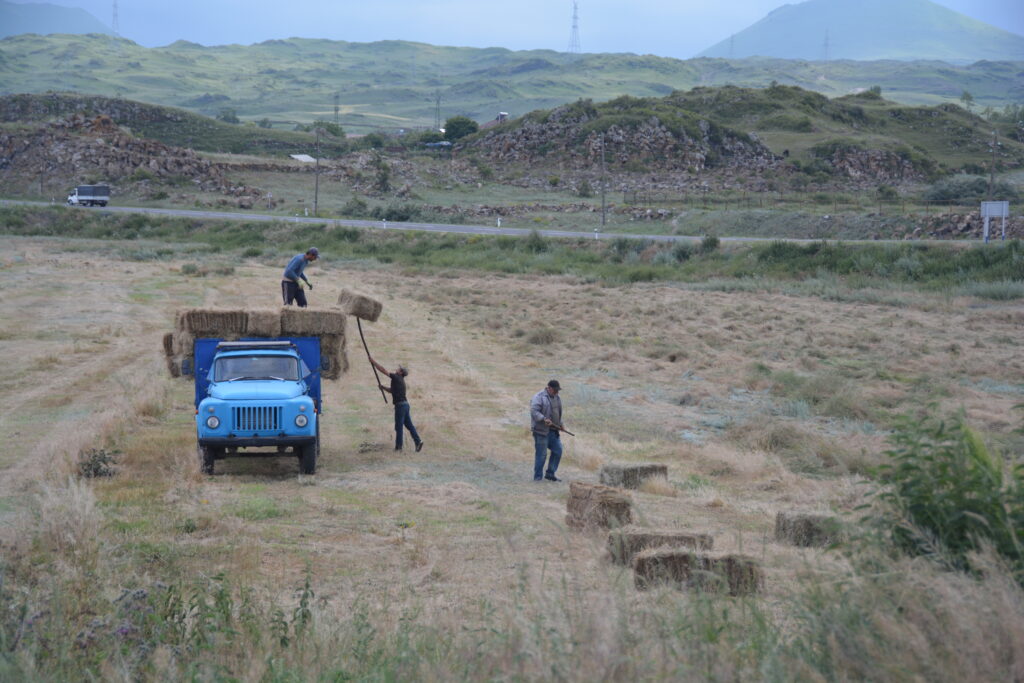
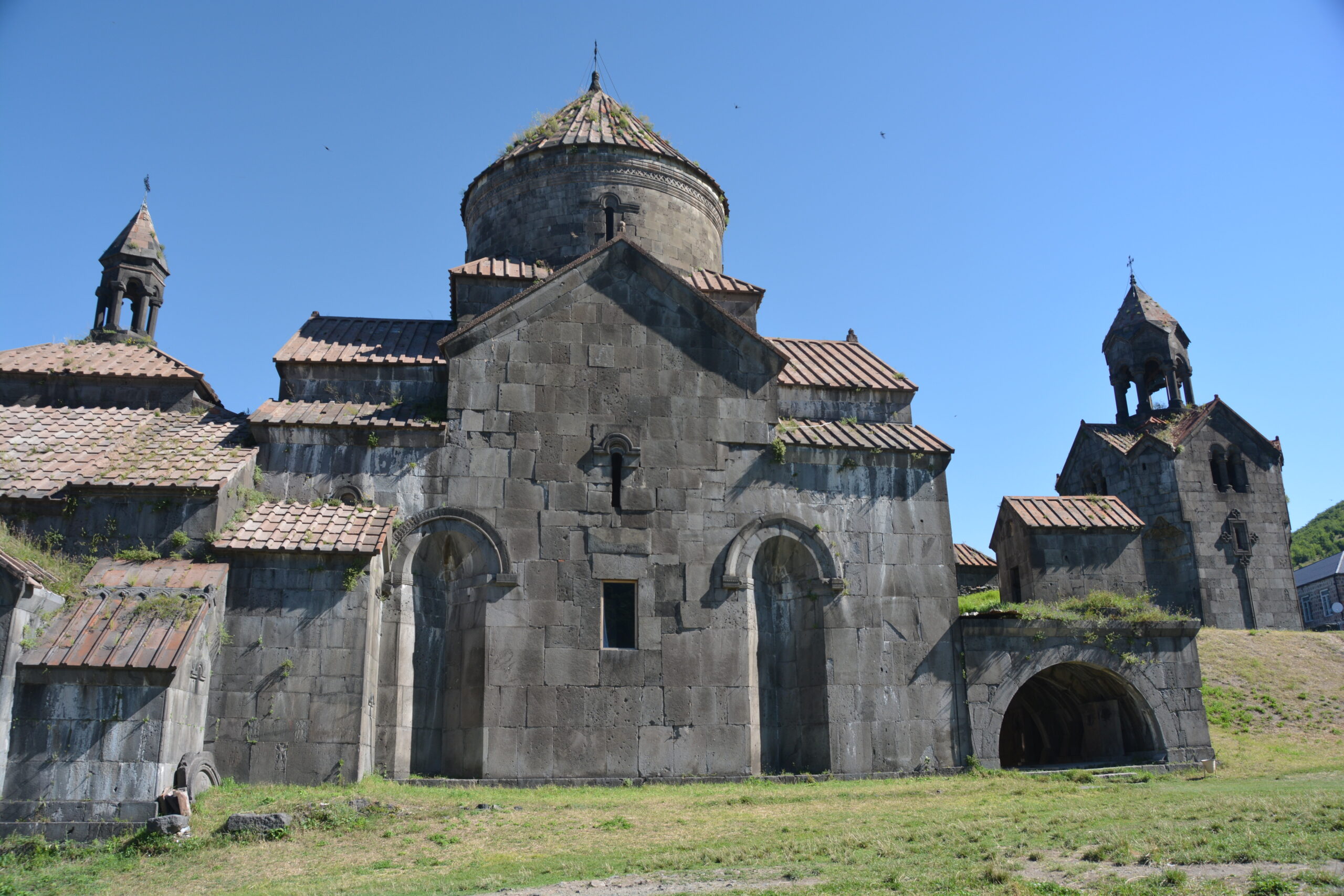
What you both are seeing and experiencing goes well beyond my imagination. Thank you!
Thanks Eric, we know you and Deborah are good travellers and perhaps some day you’ll see this beautiful region.
Cheers,
Bill
Loving it all, but I am not brave enough to do what you do!
xoxo
Hi Anne, thanks for the note, we’re loving our journey so far. I hope you and Steve are going well. Bill